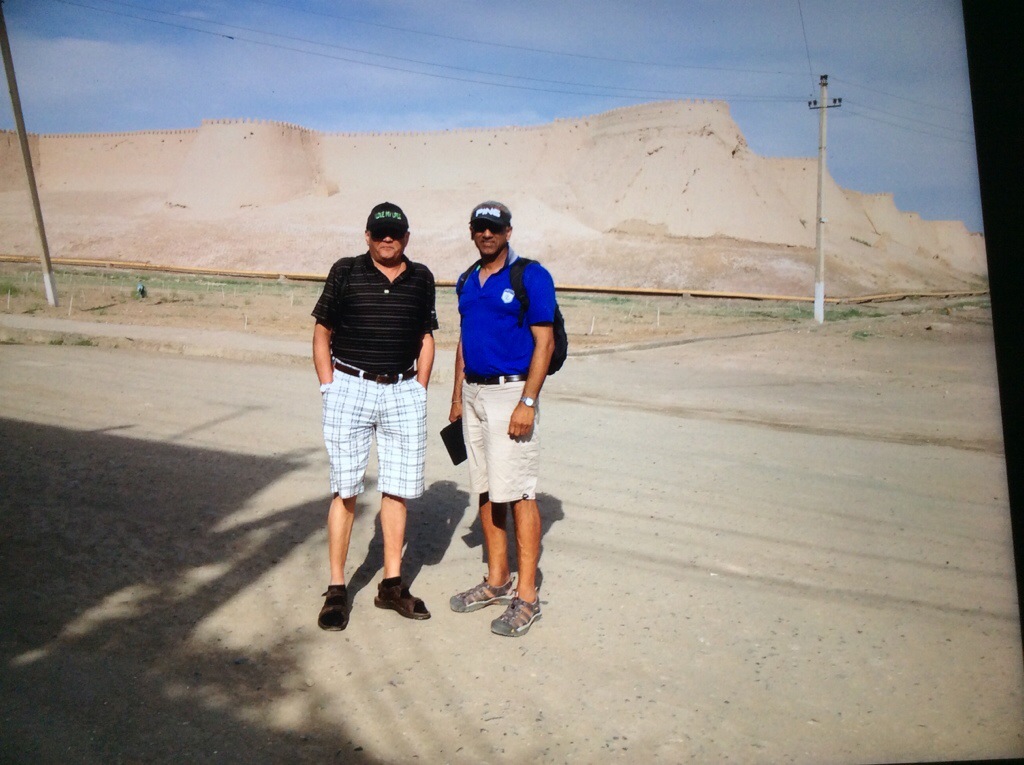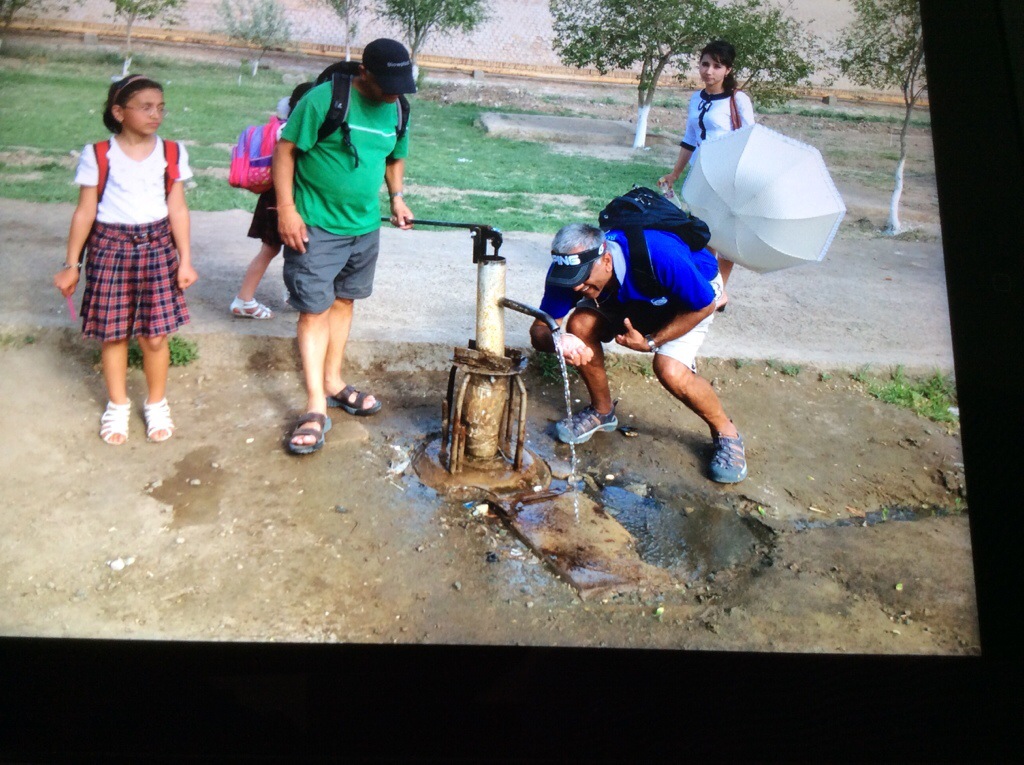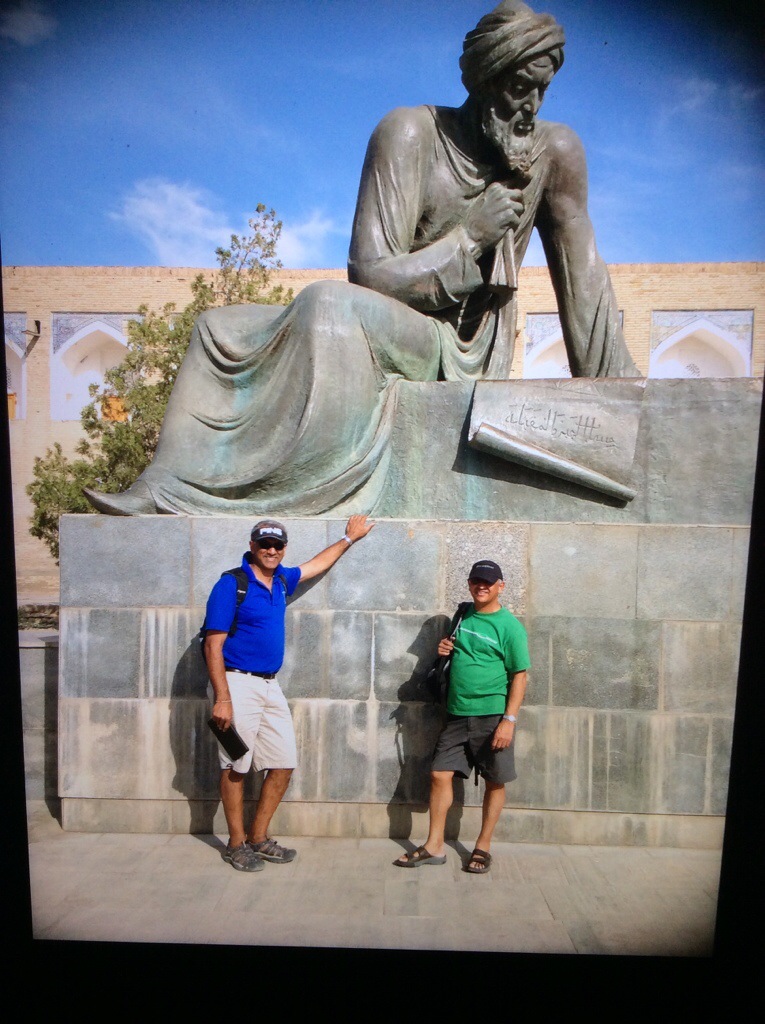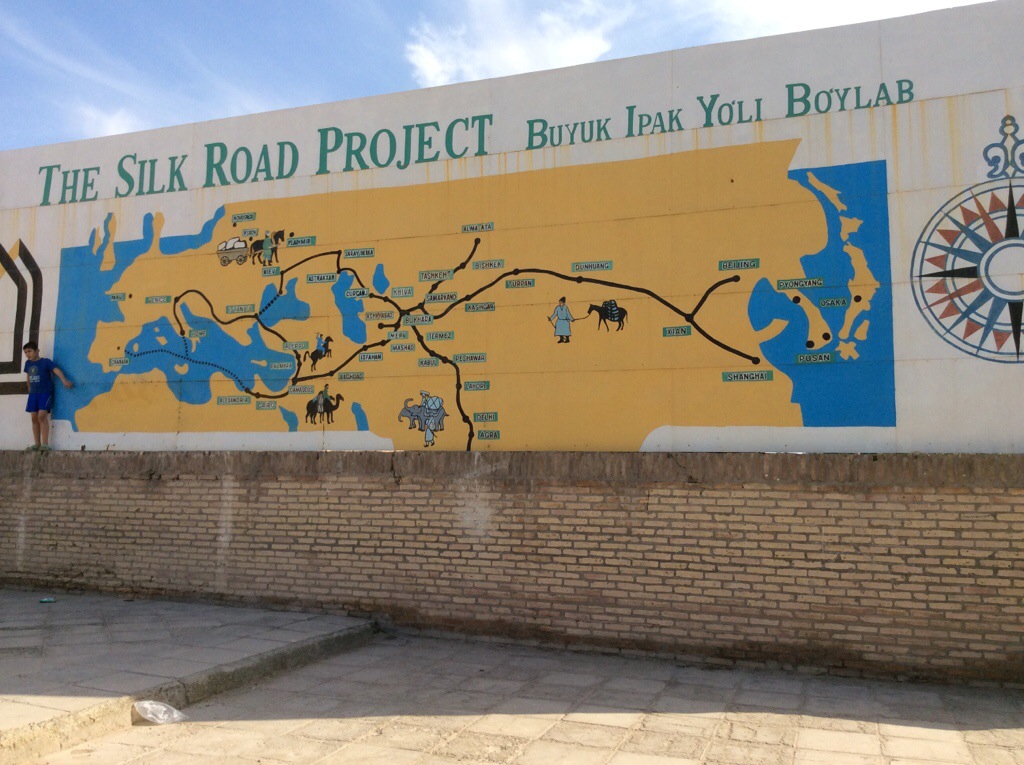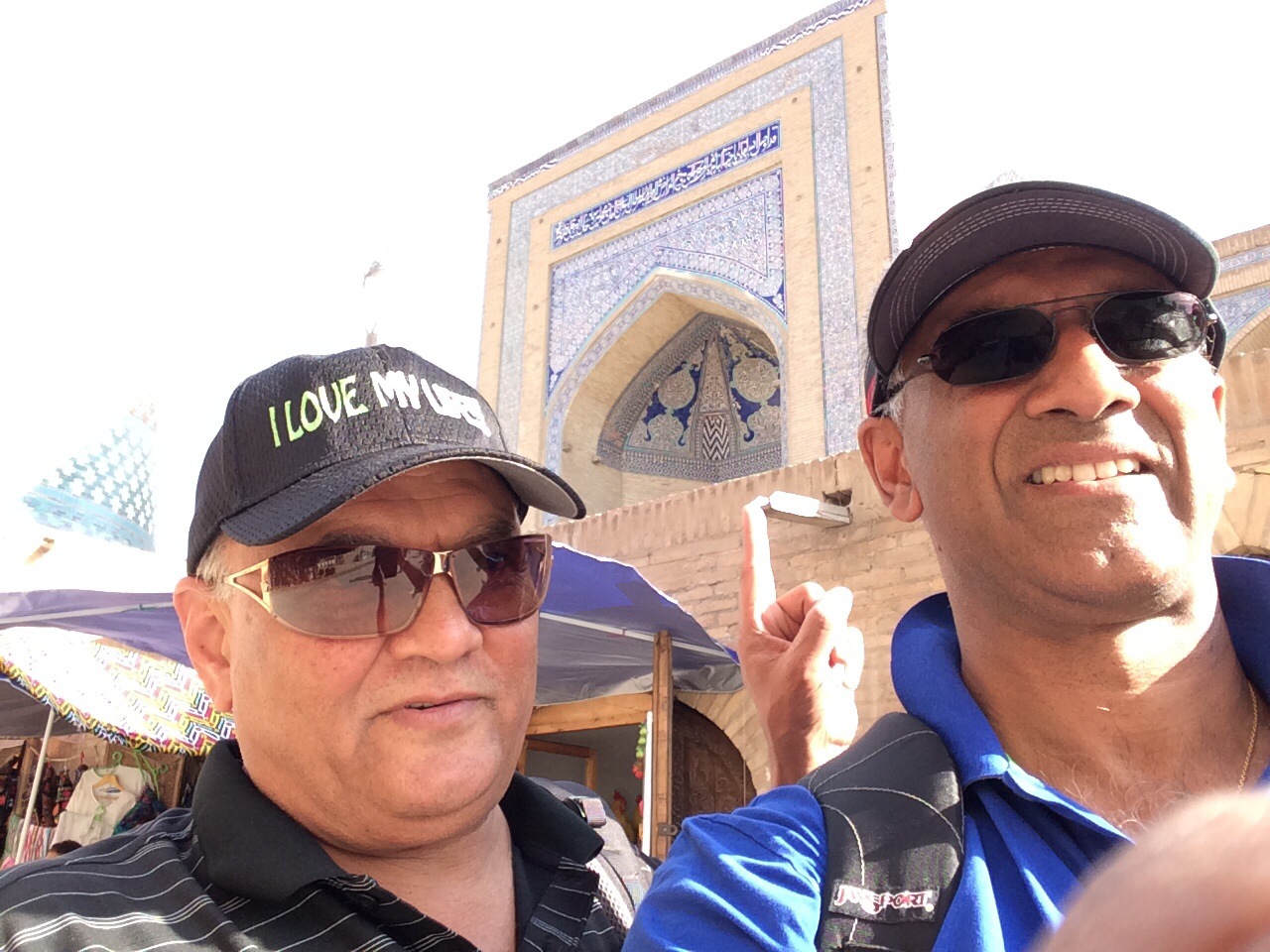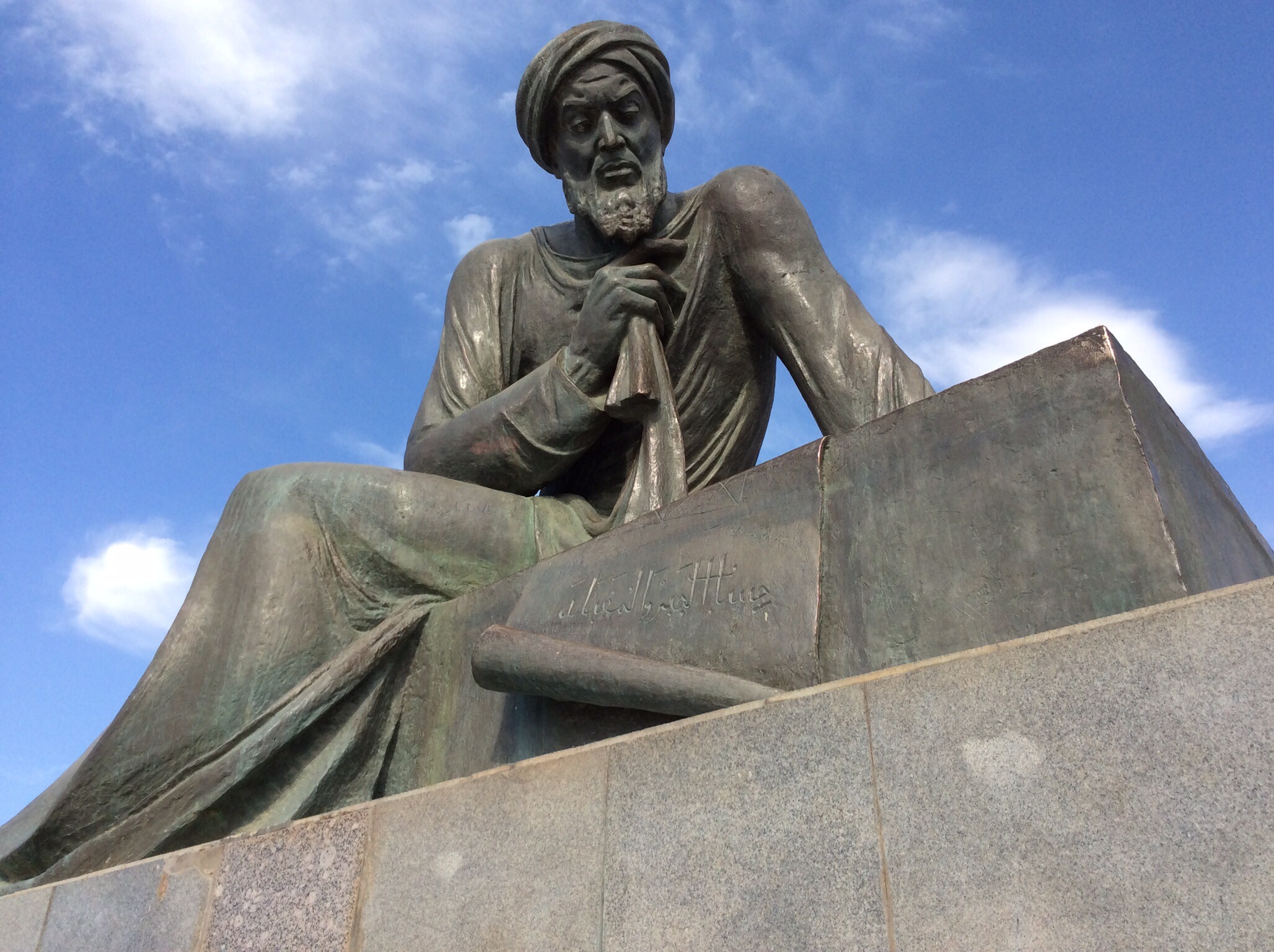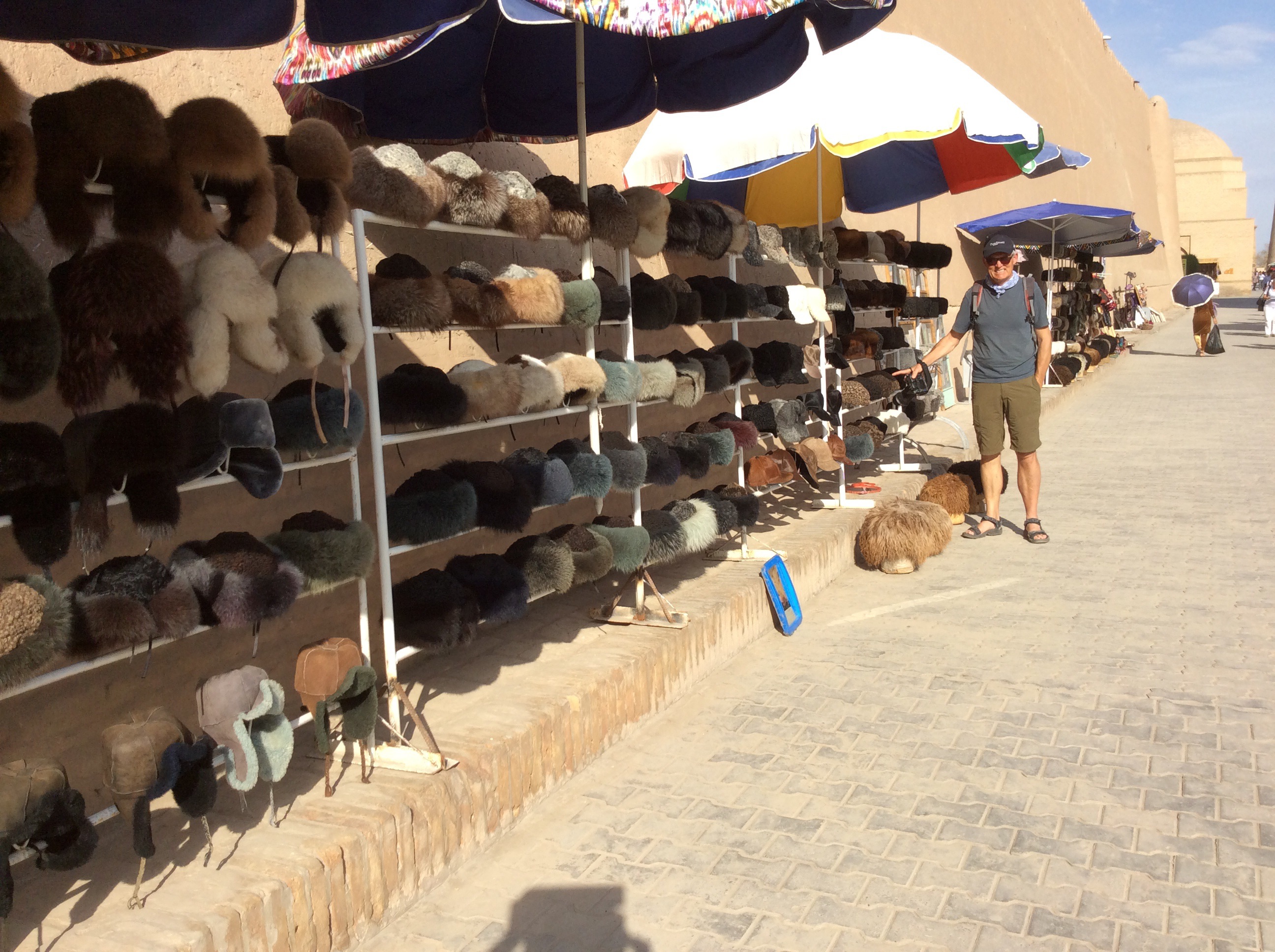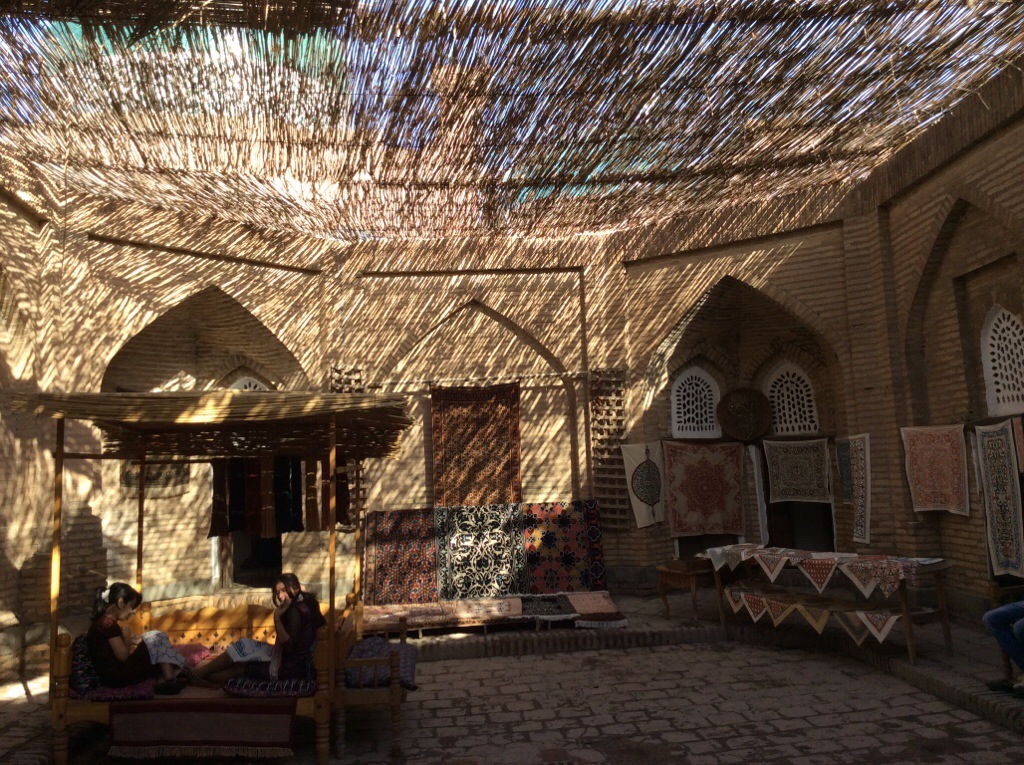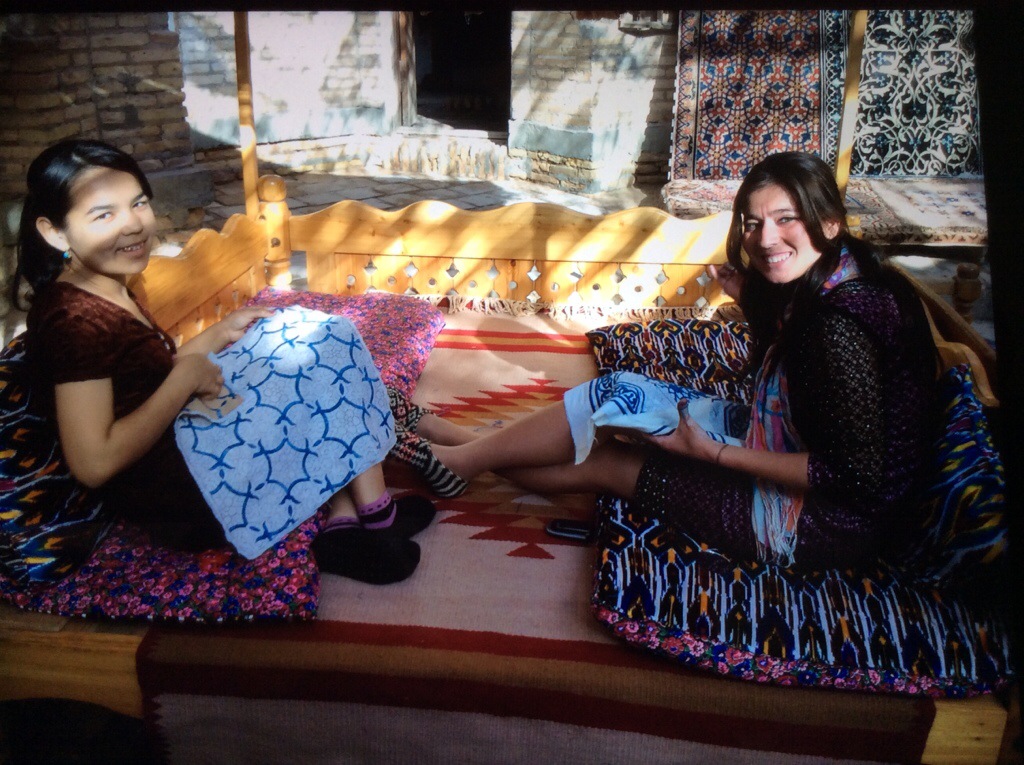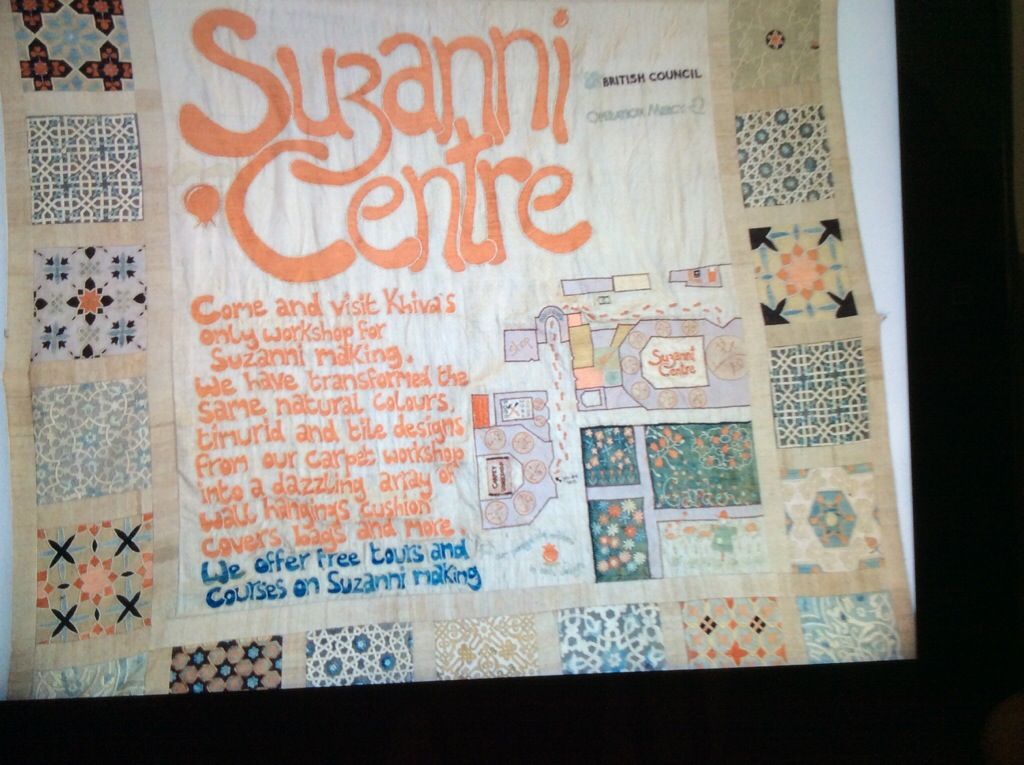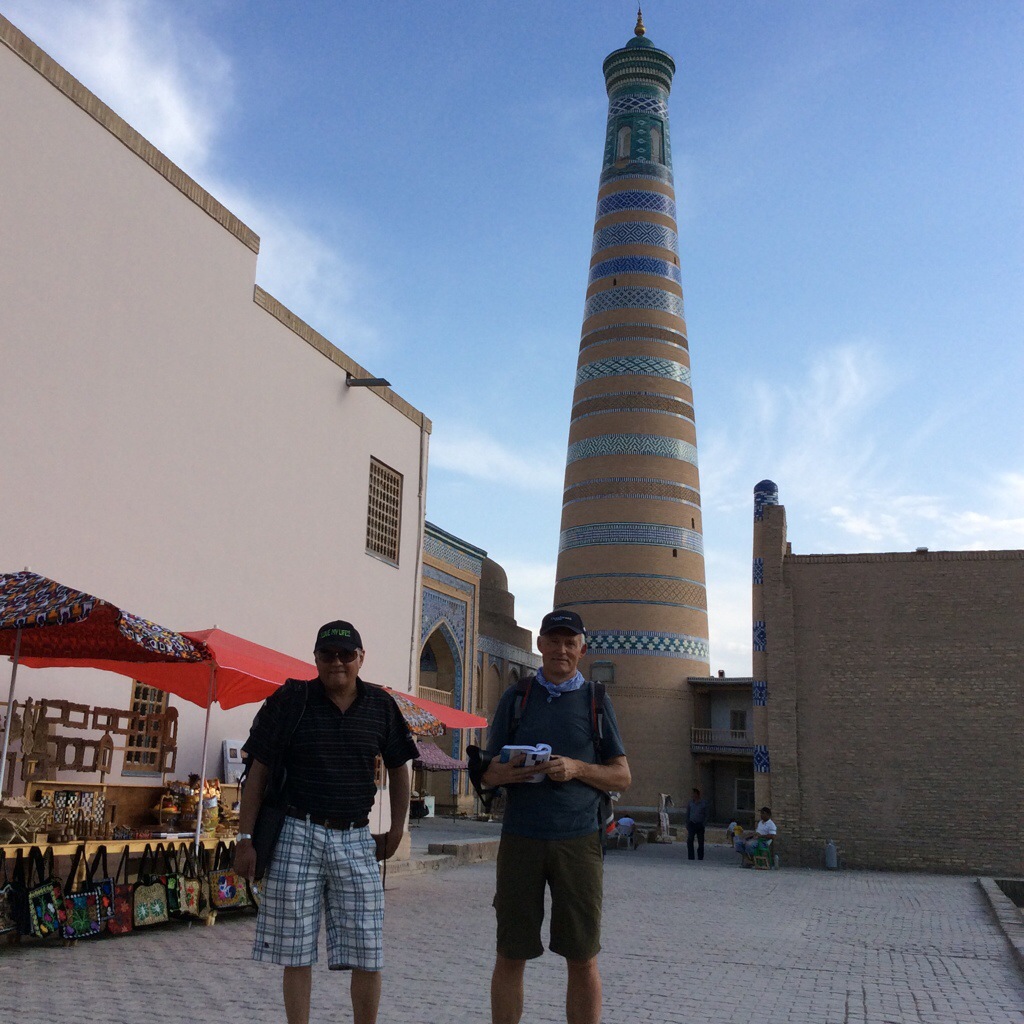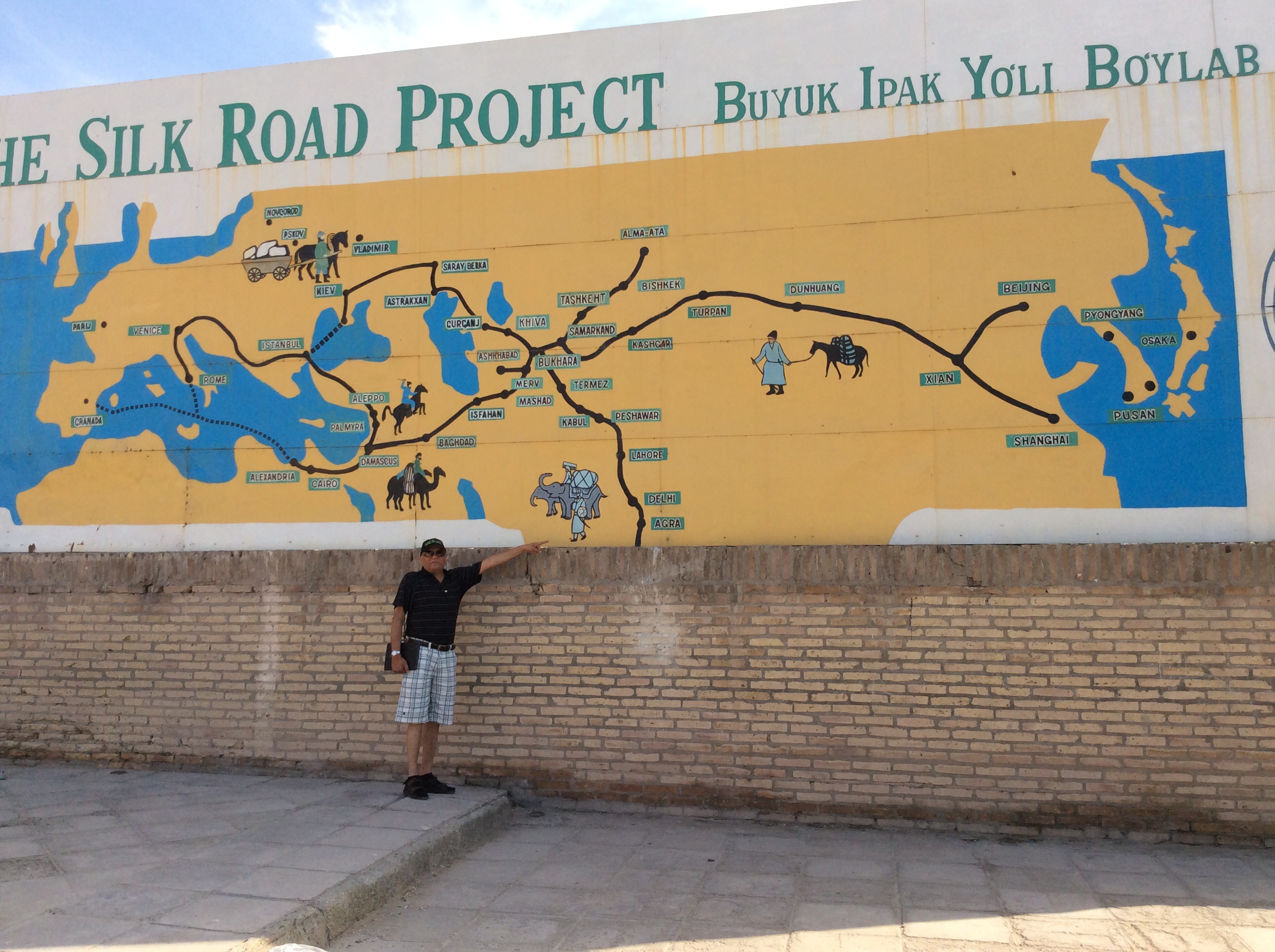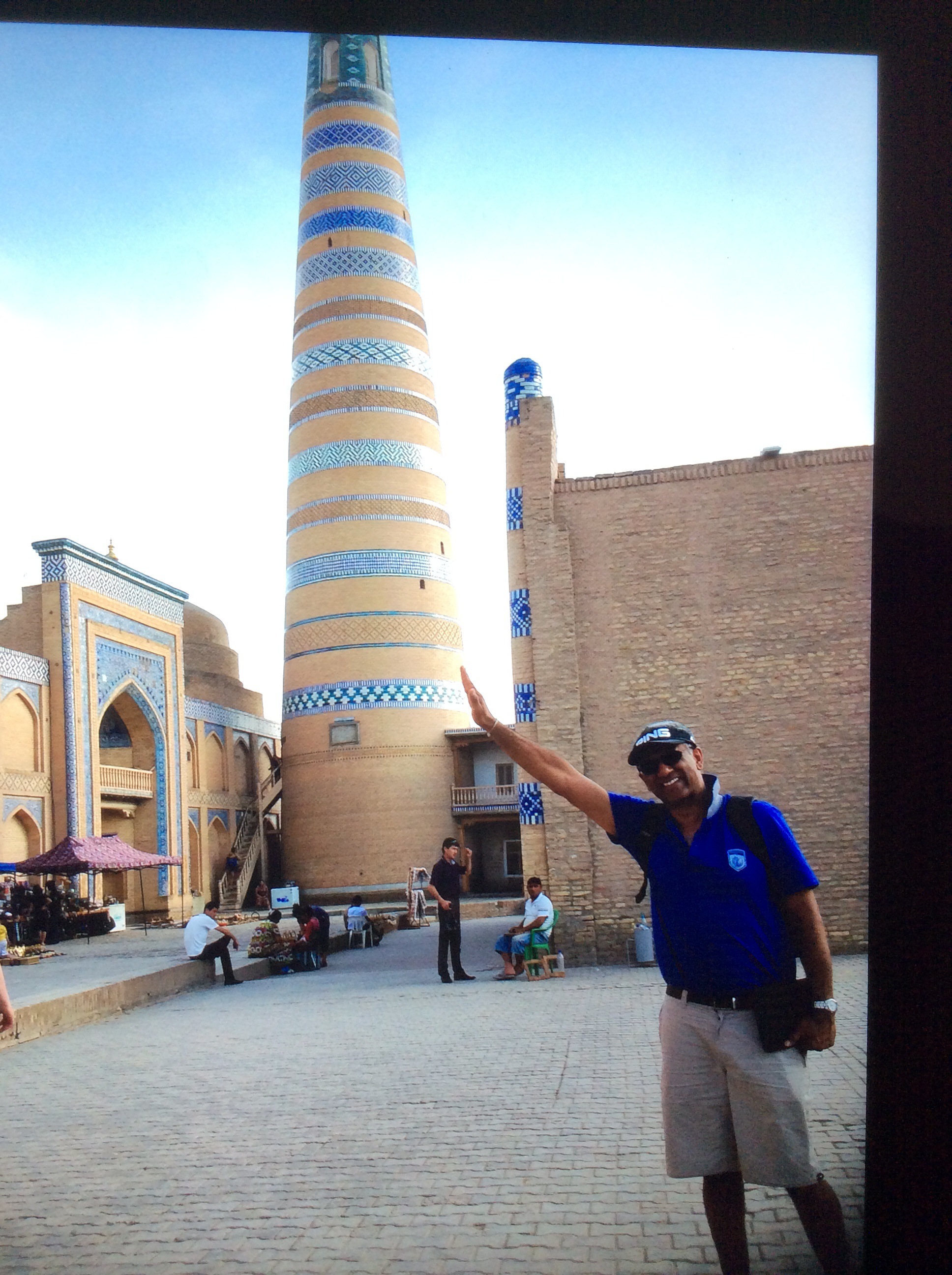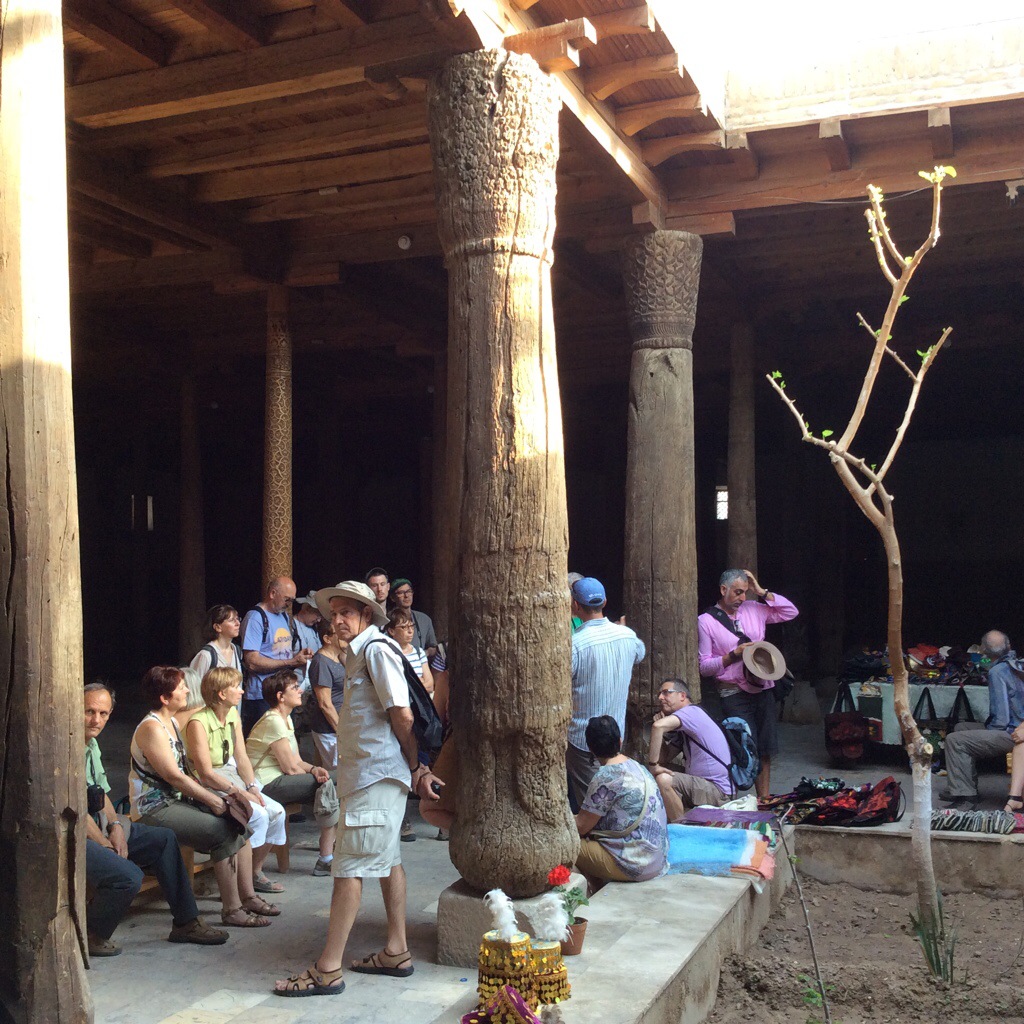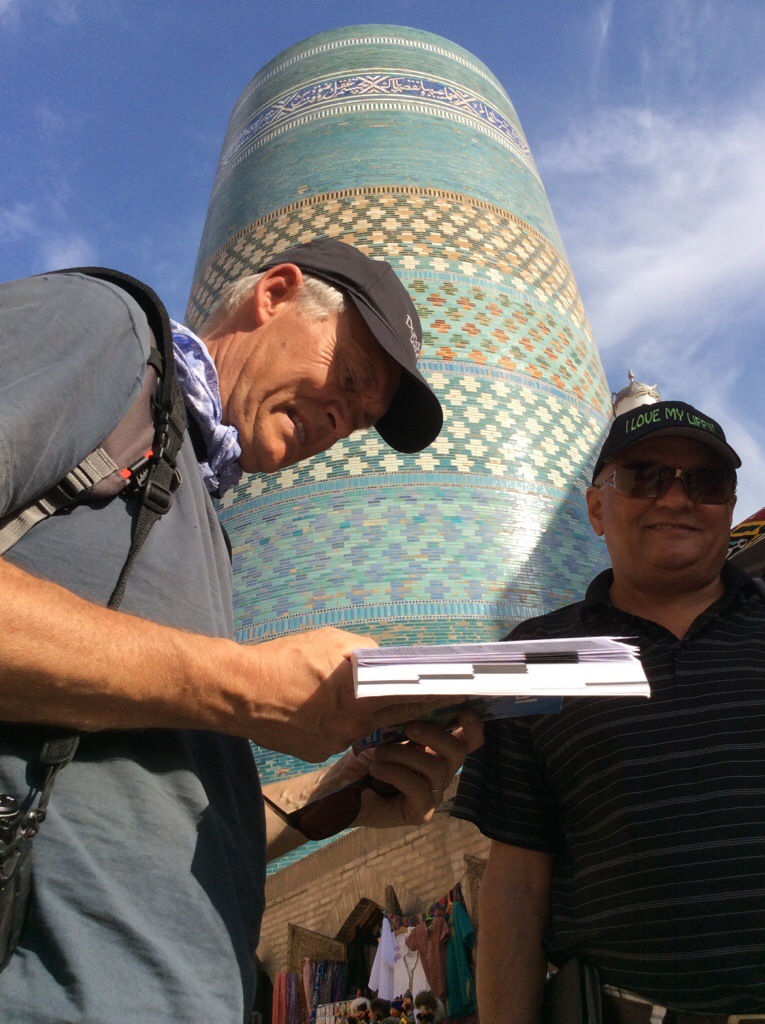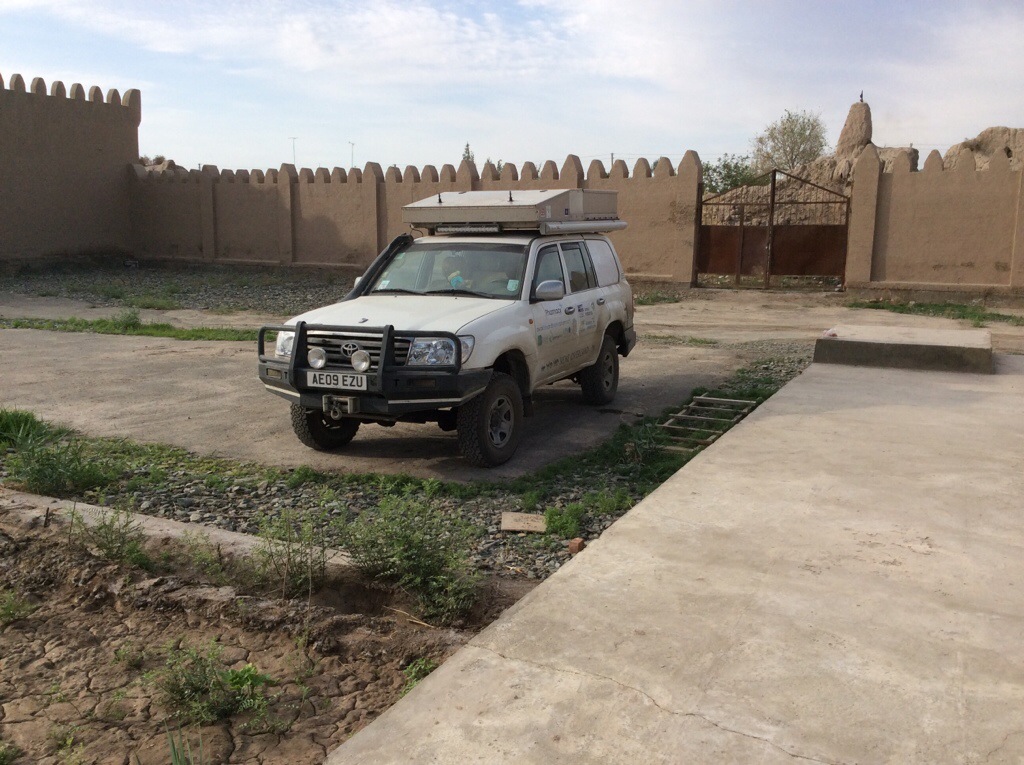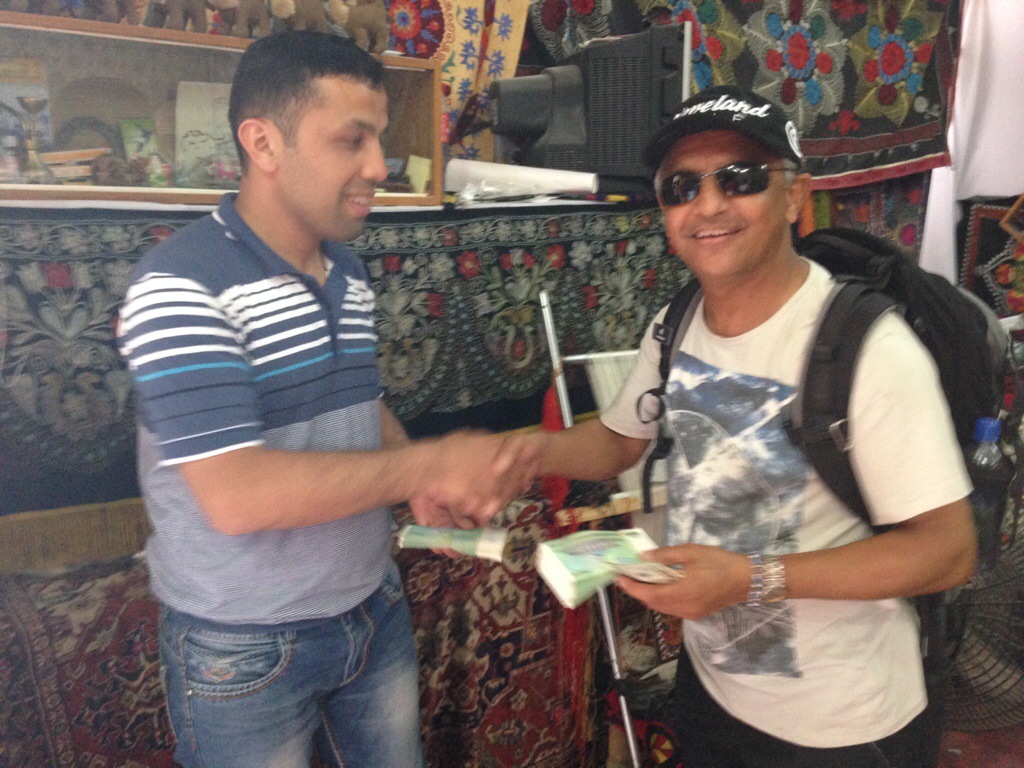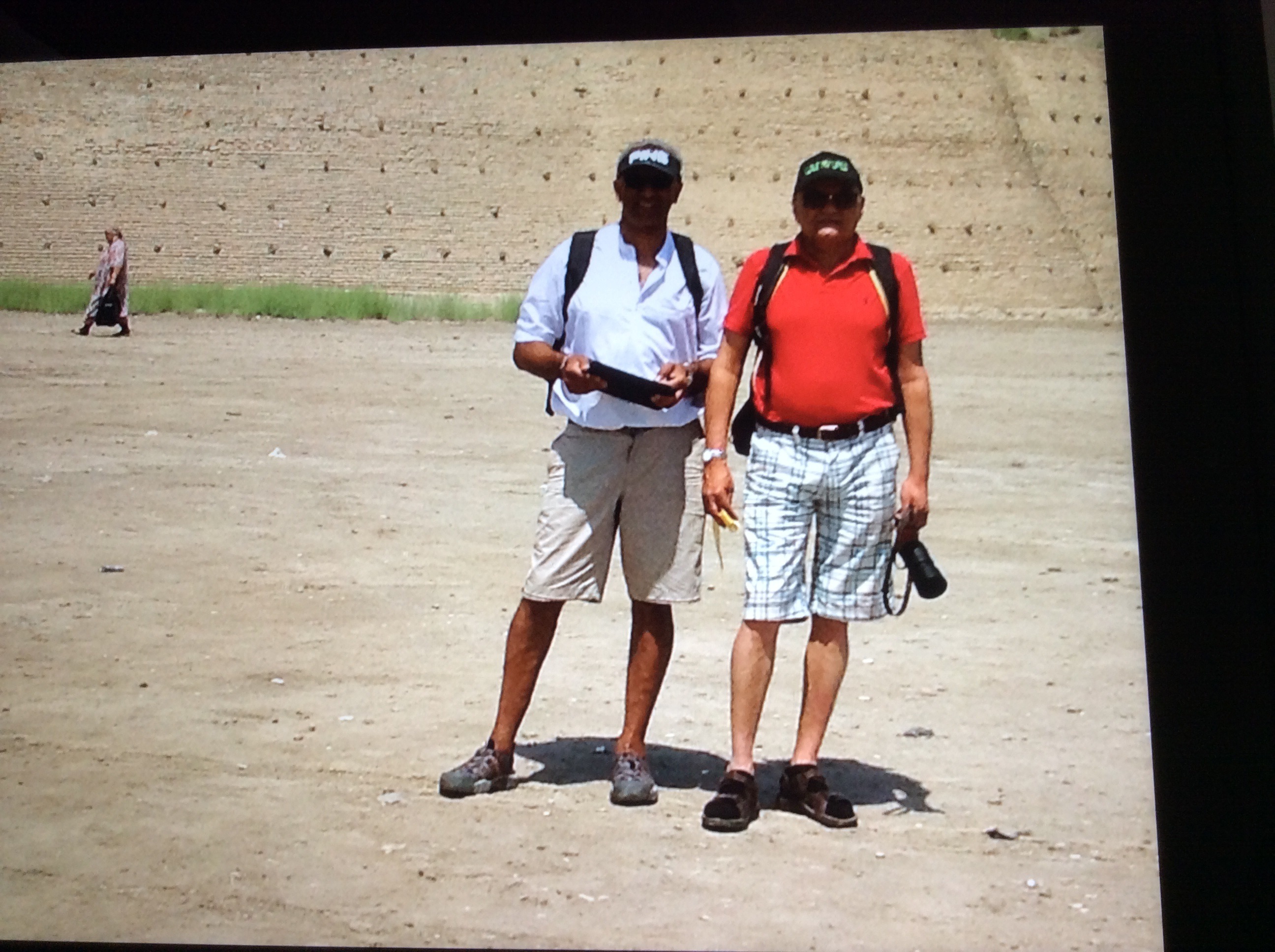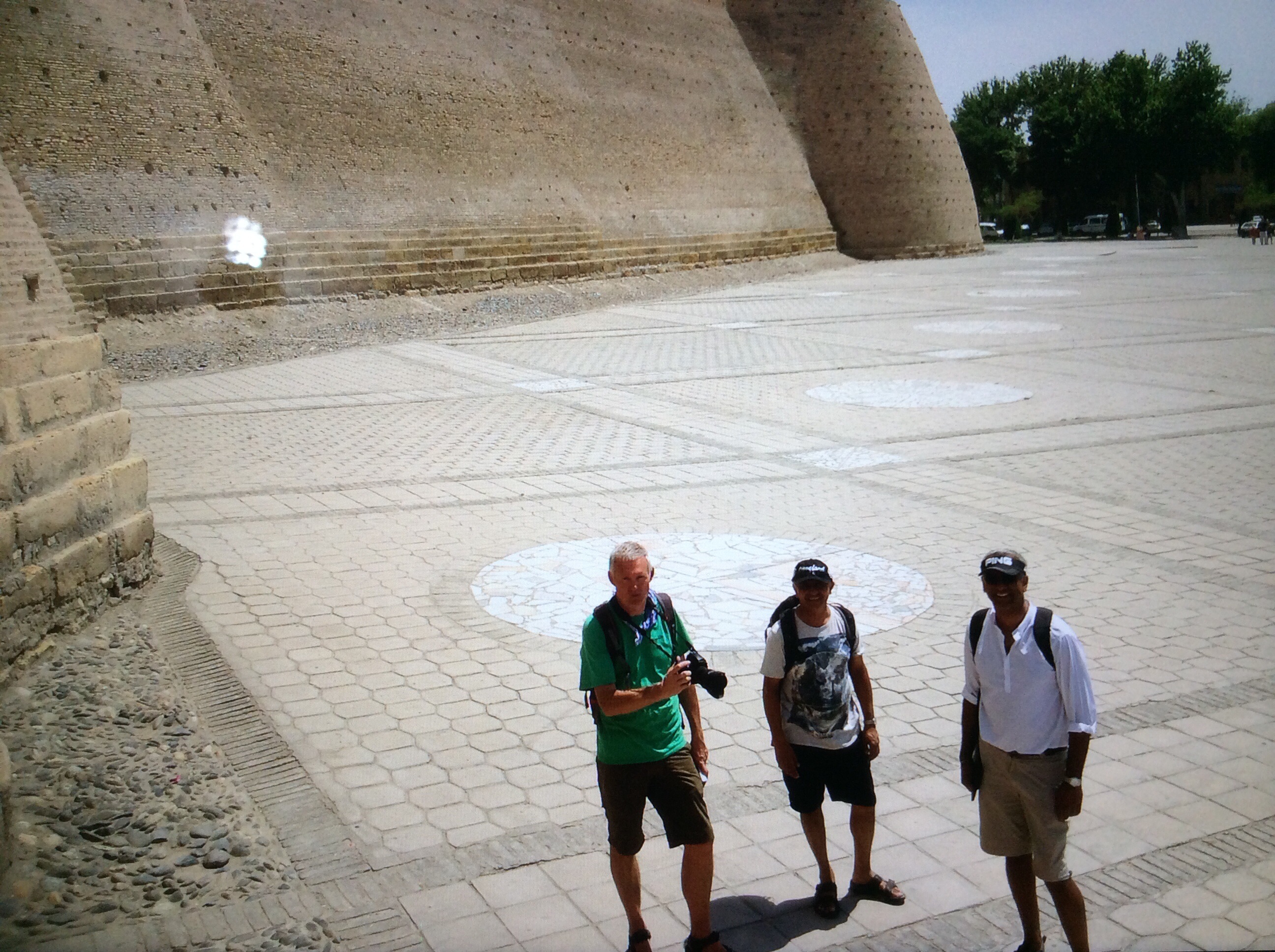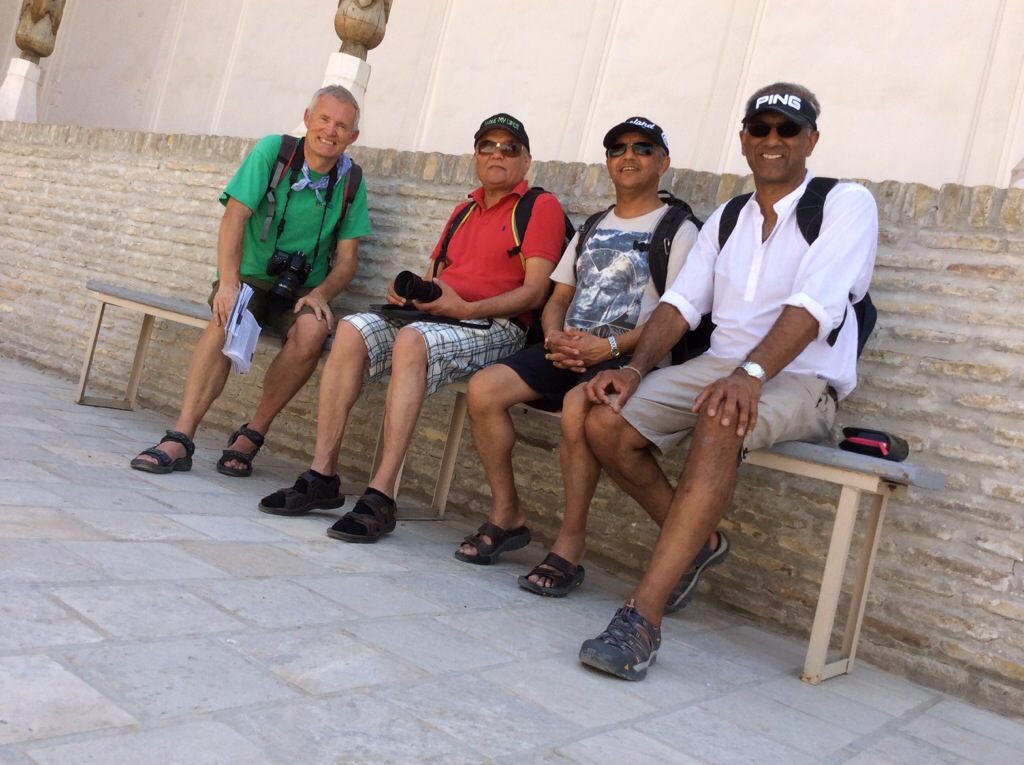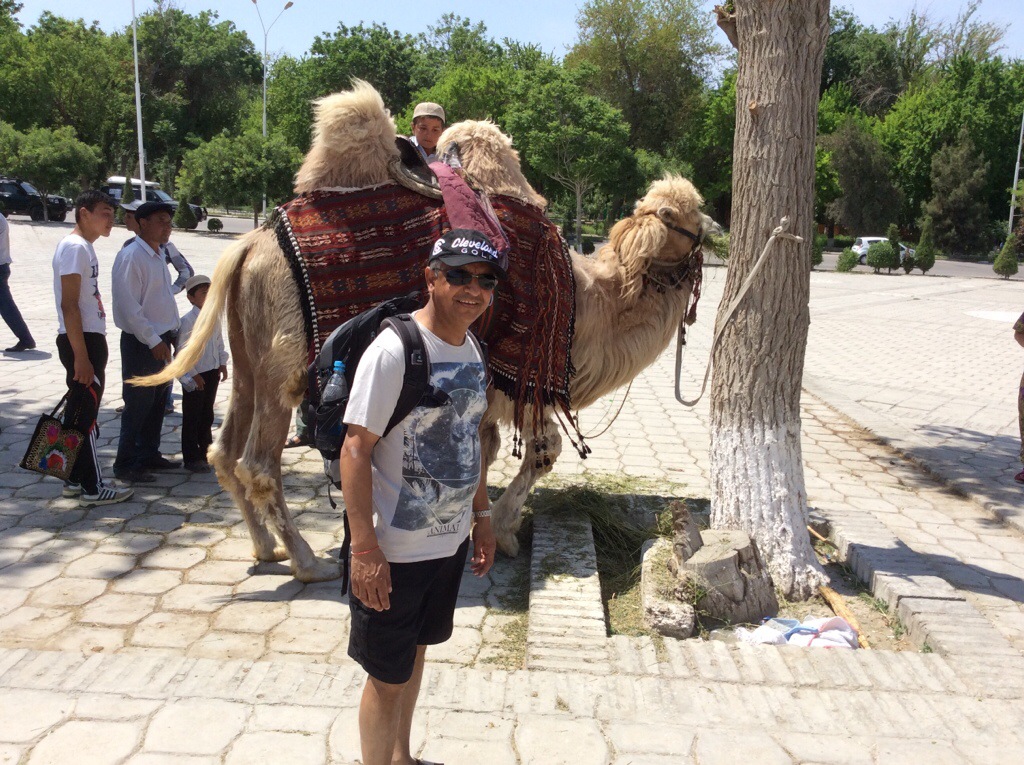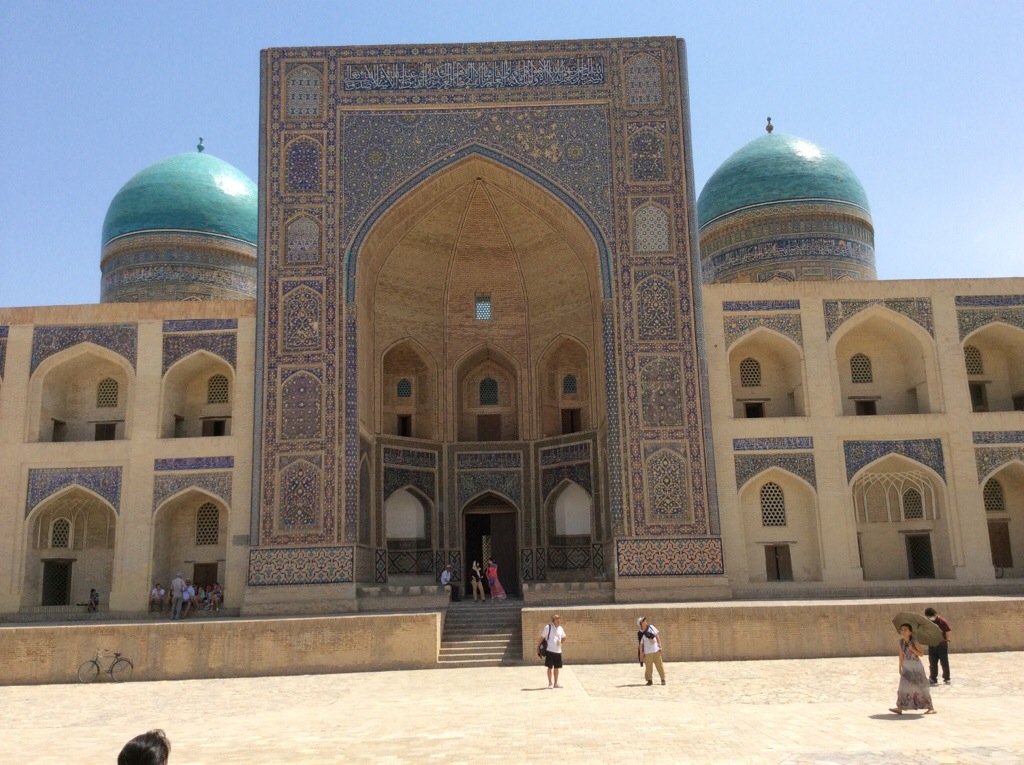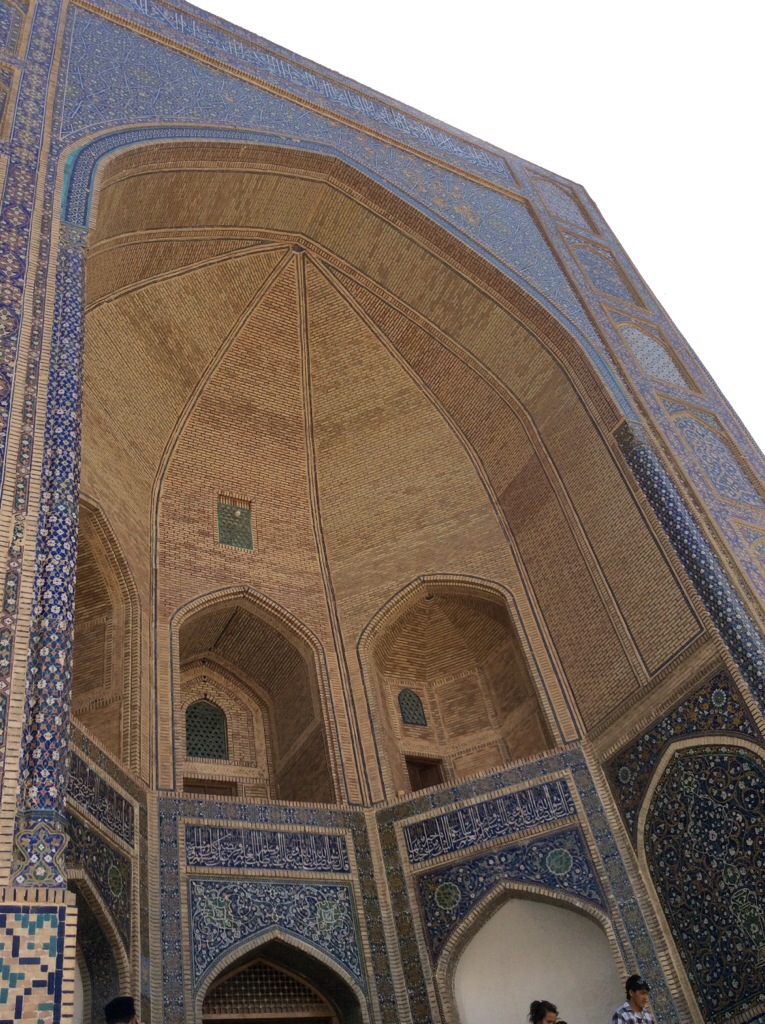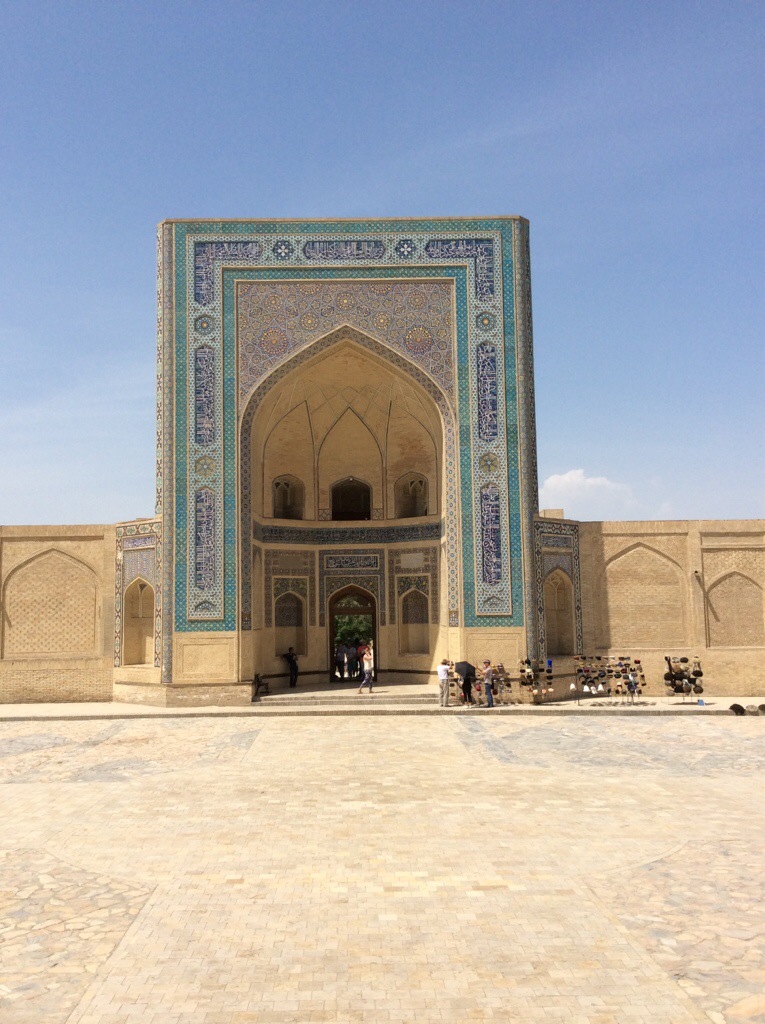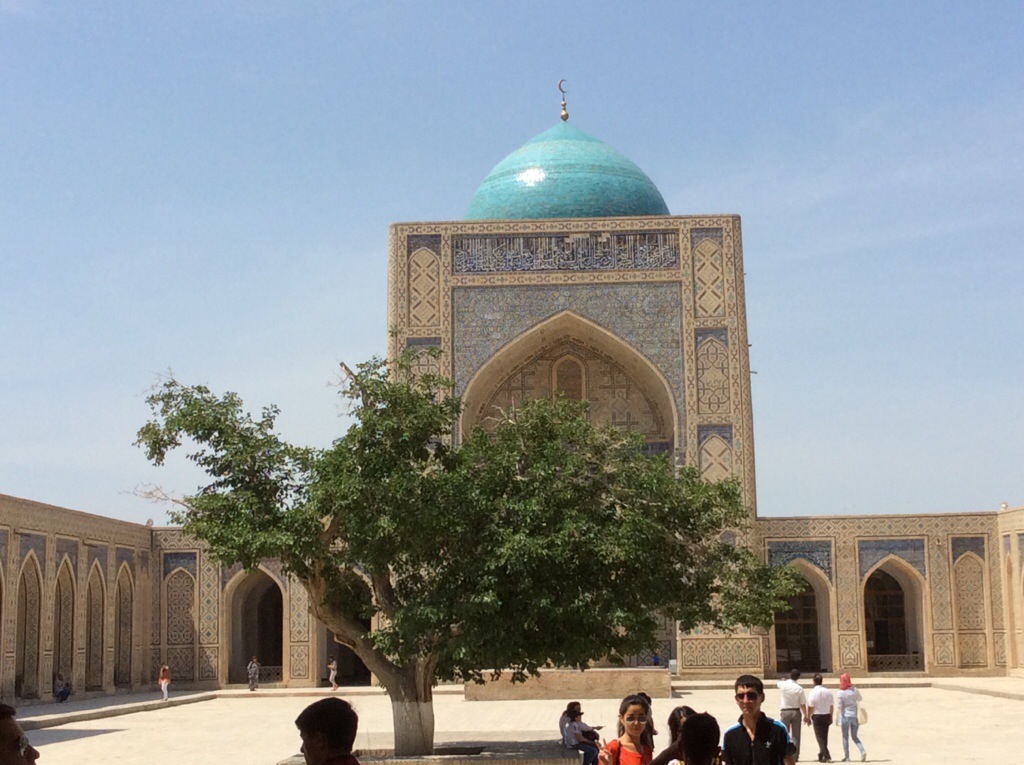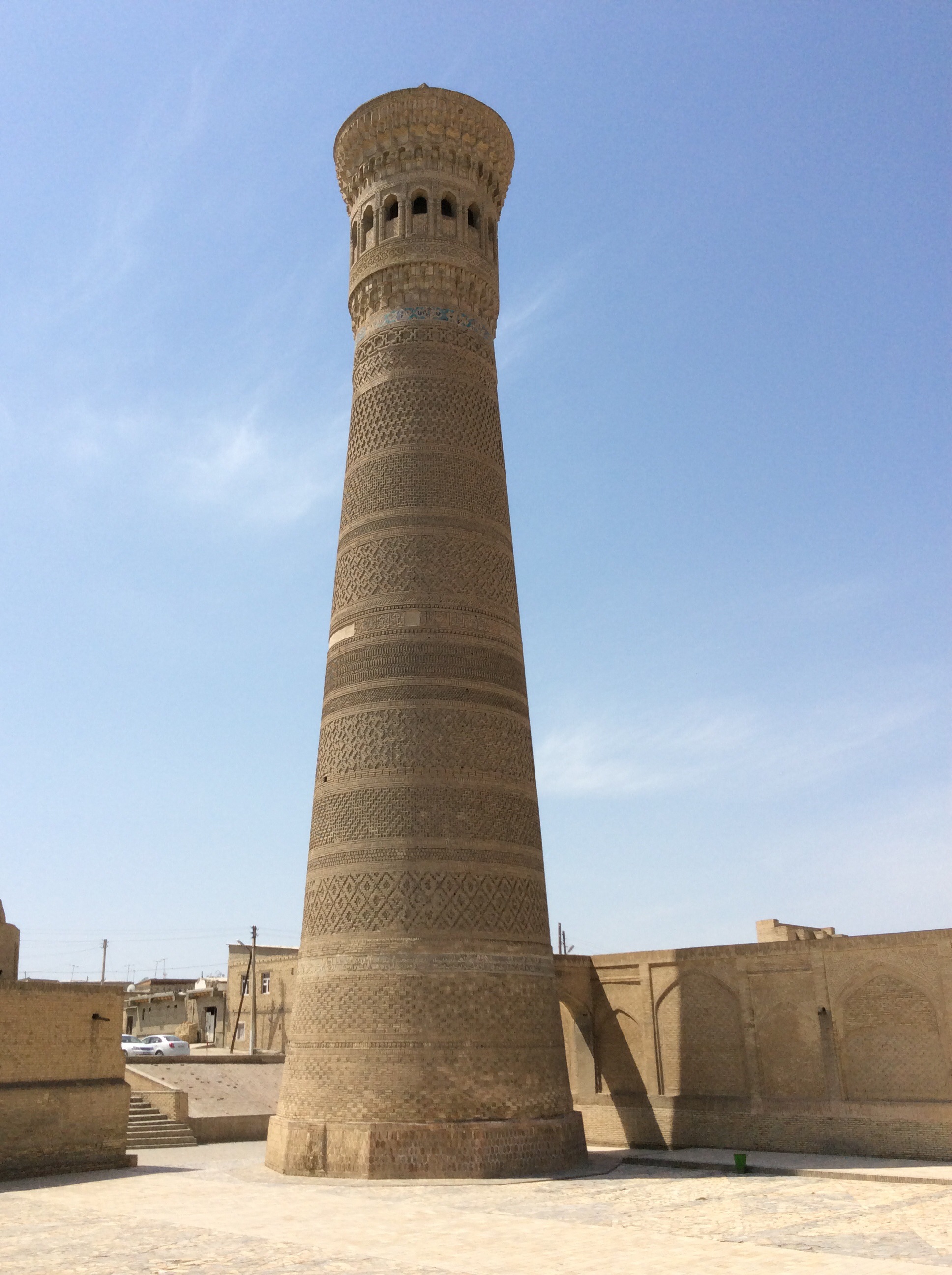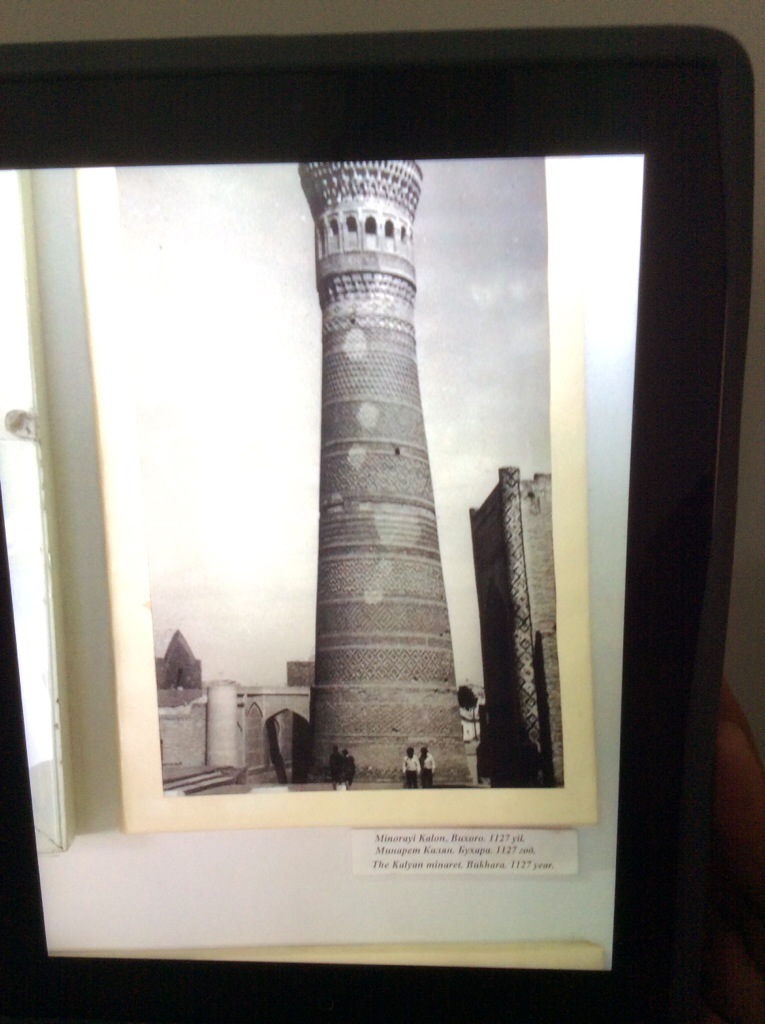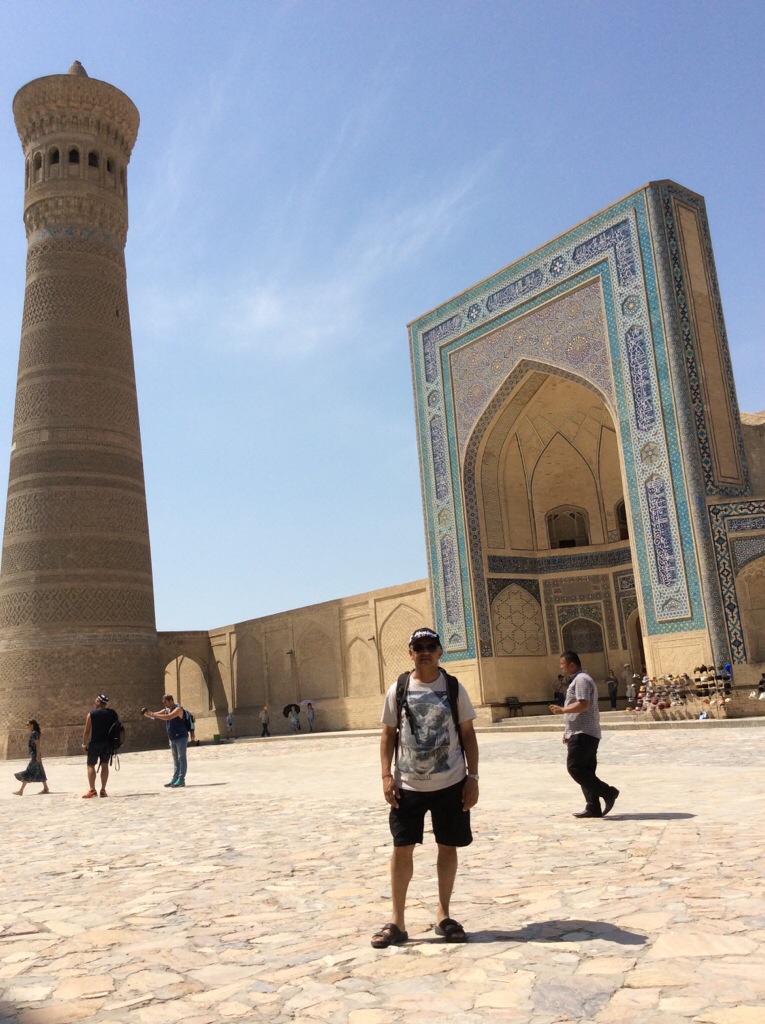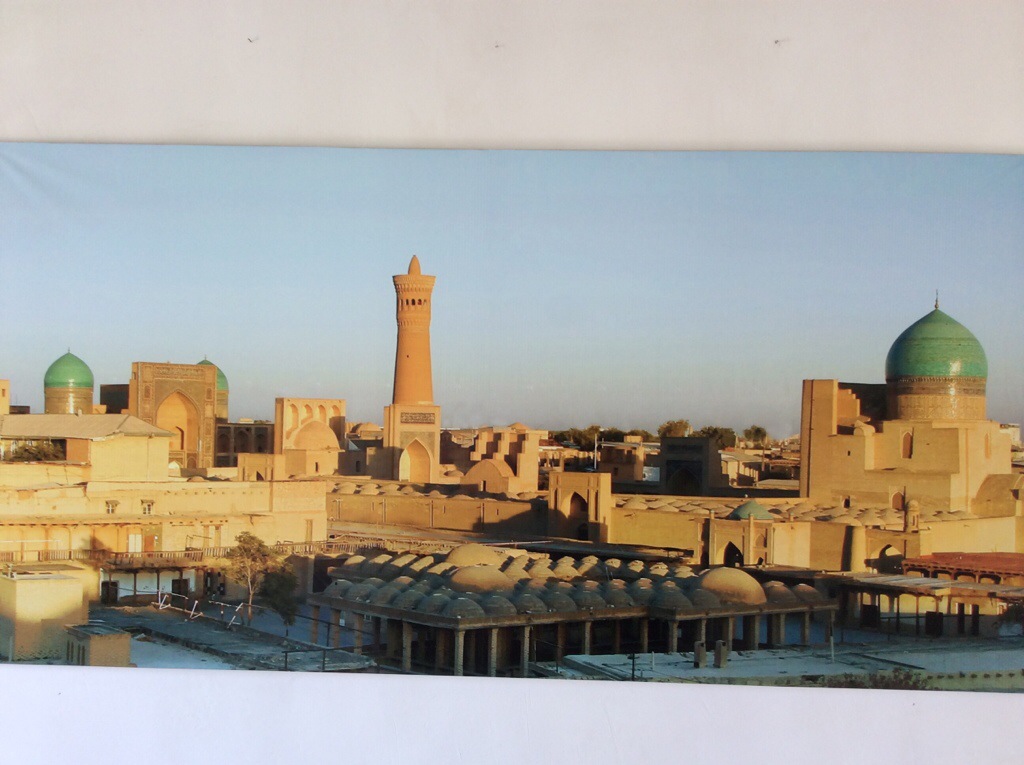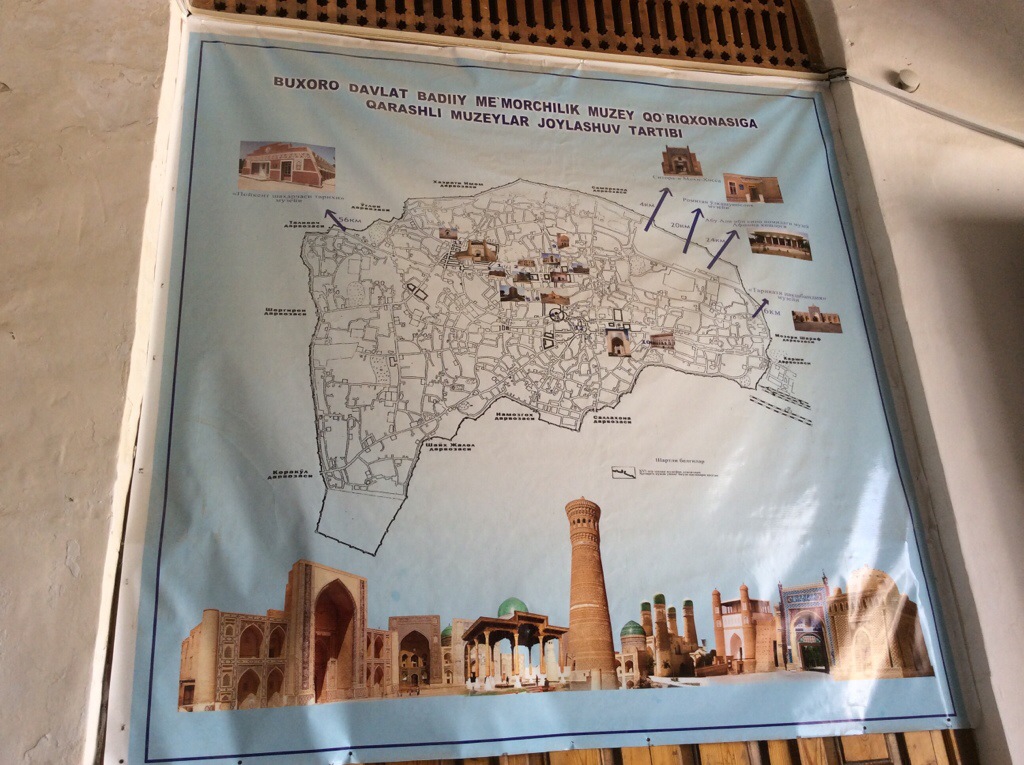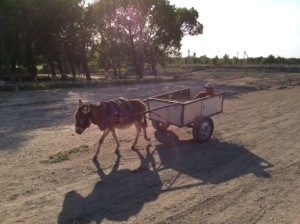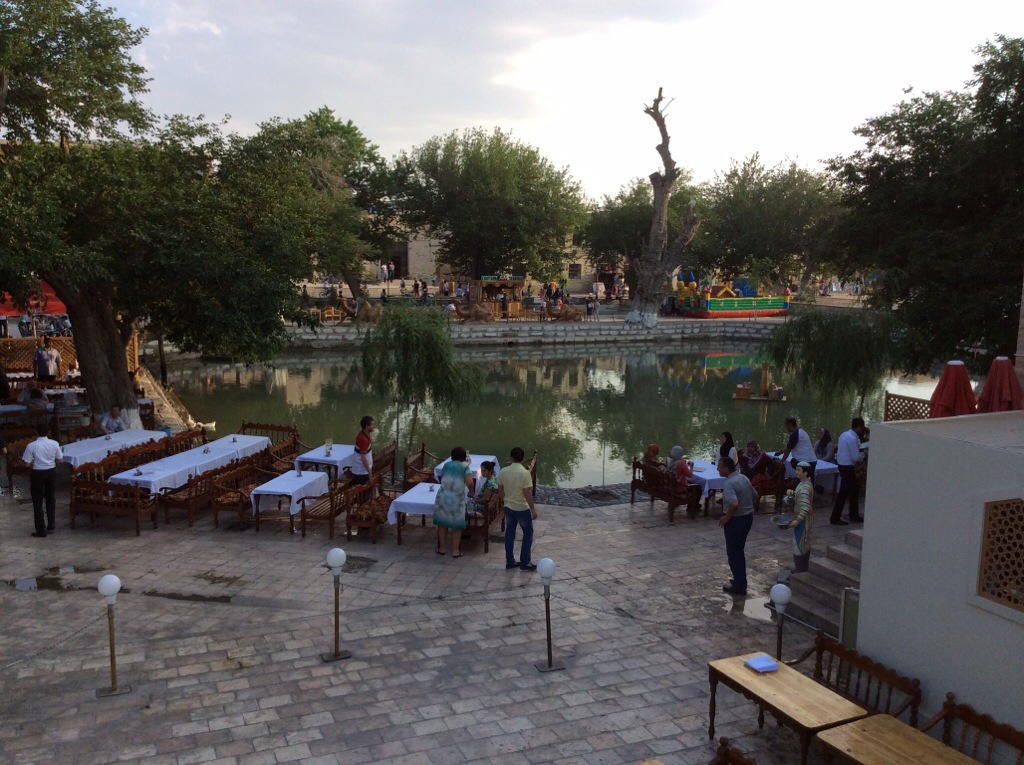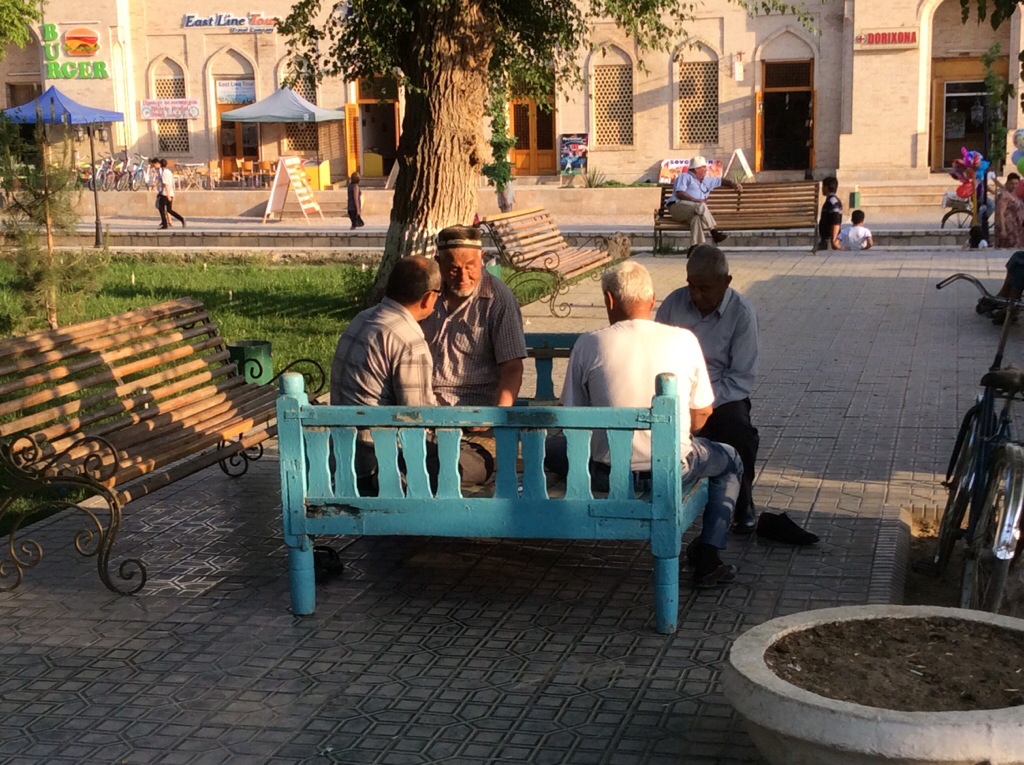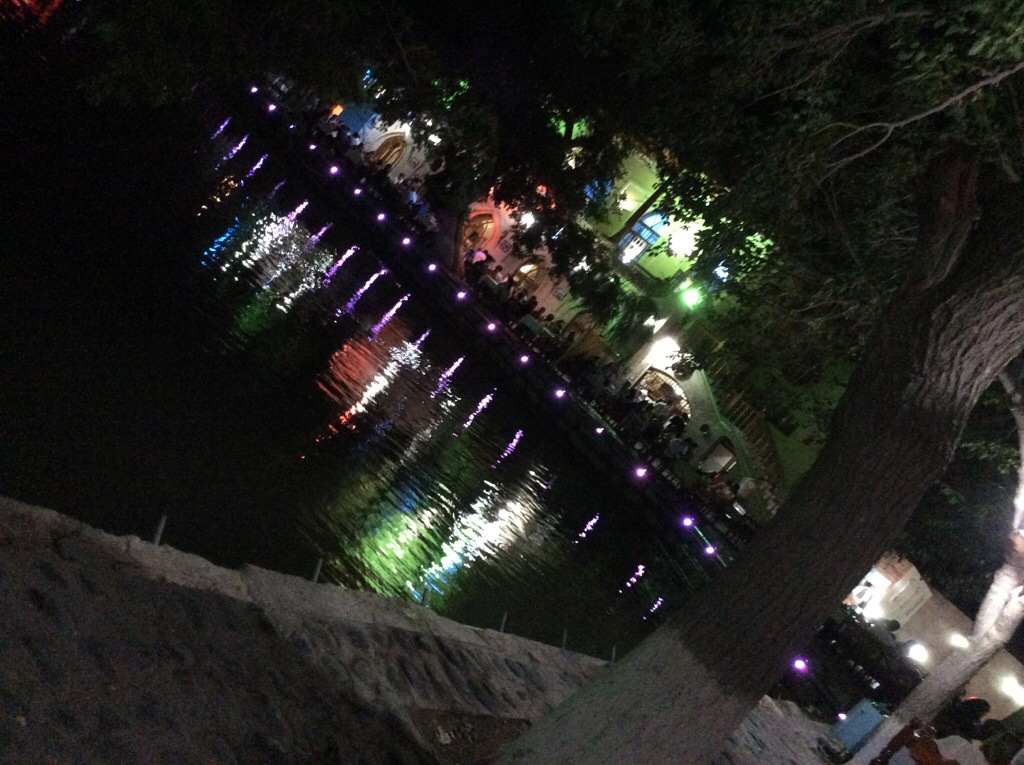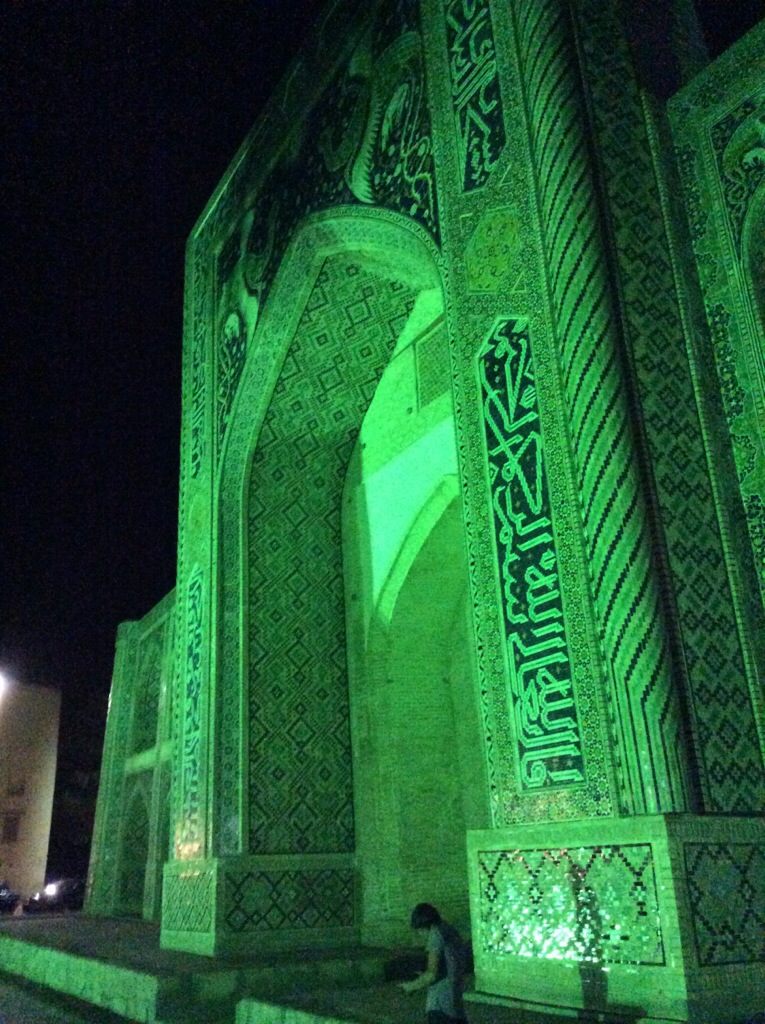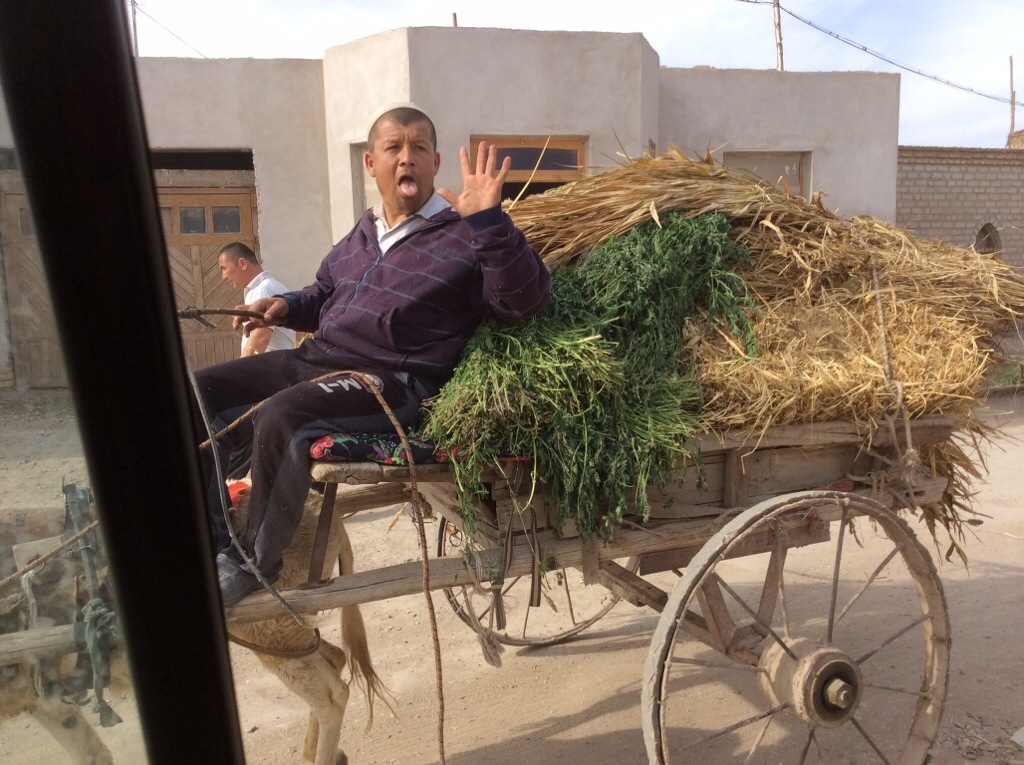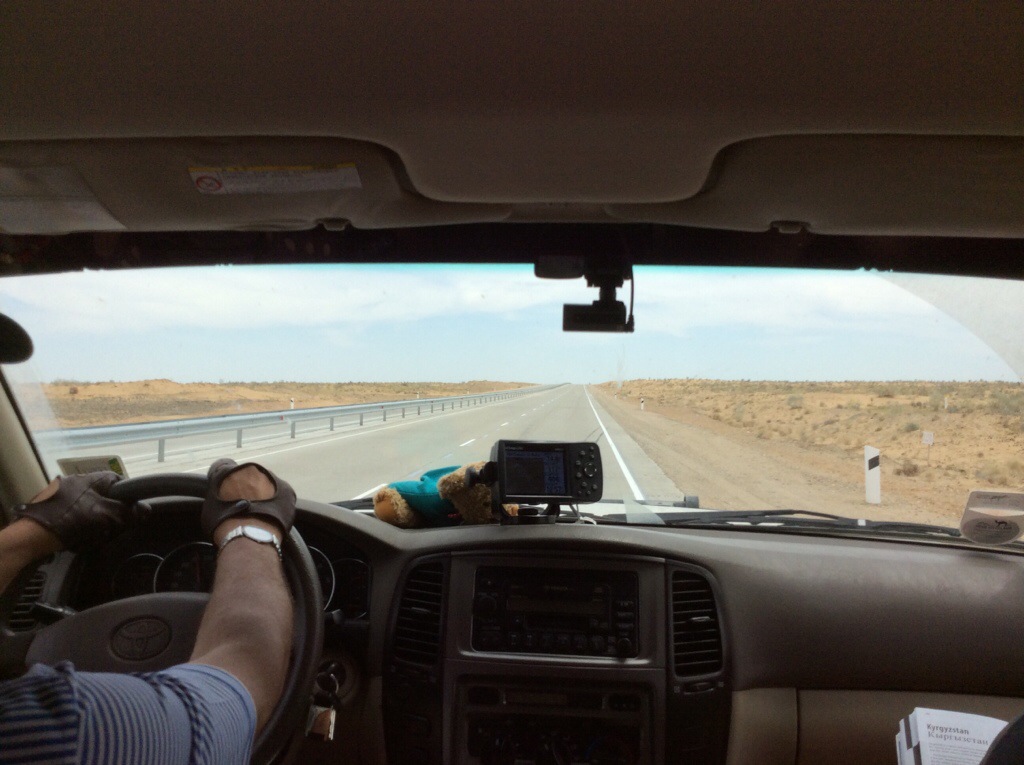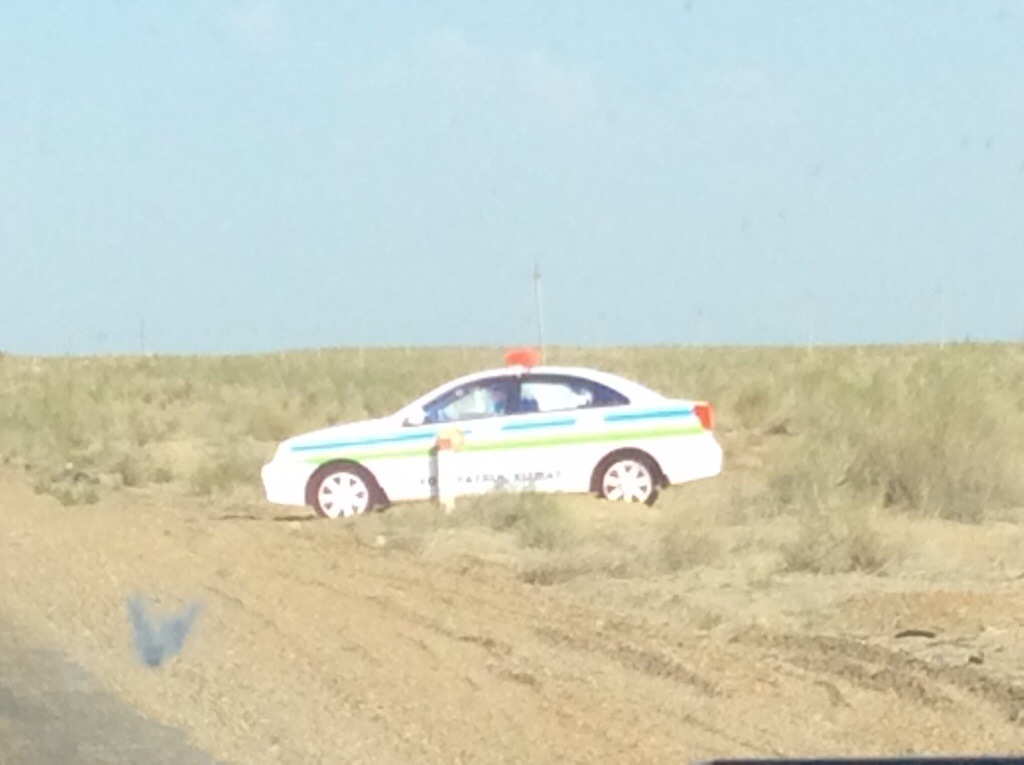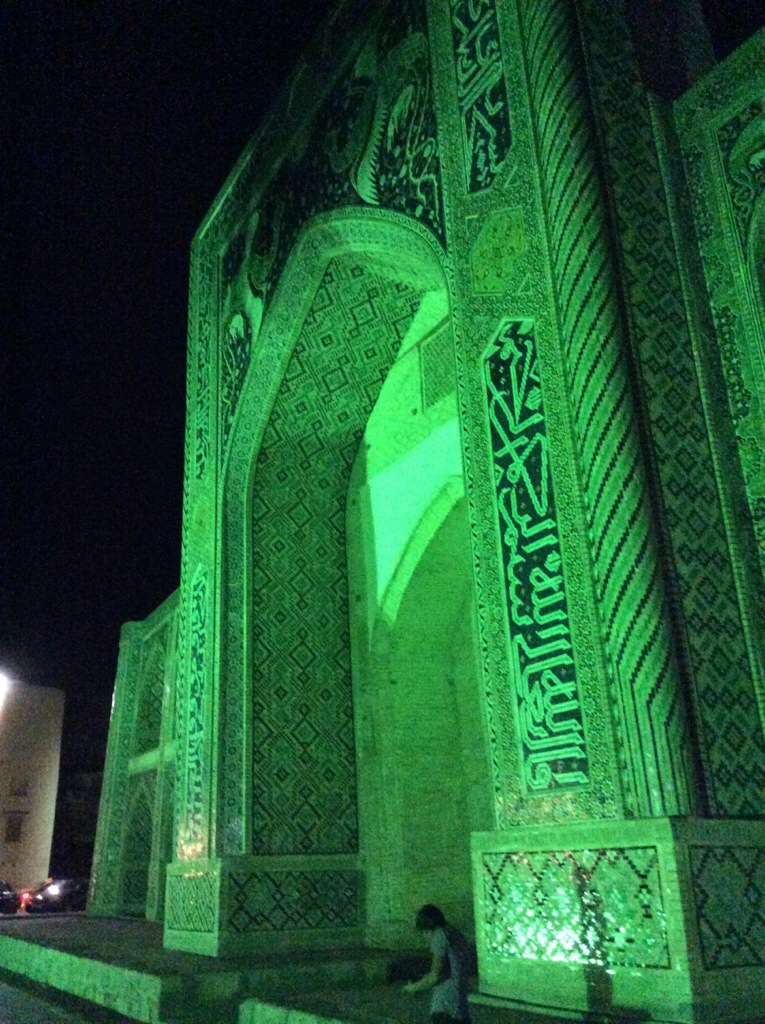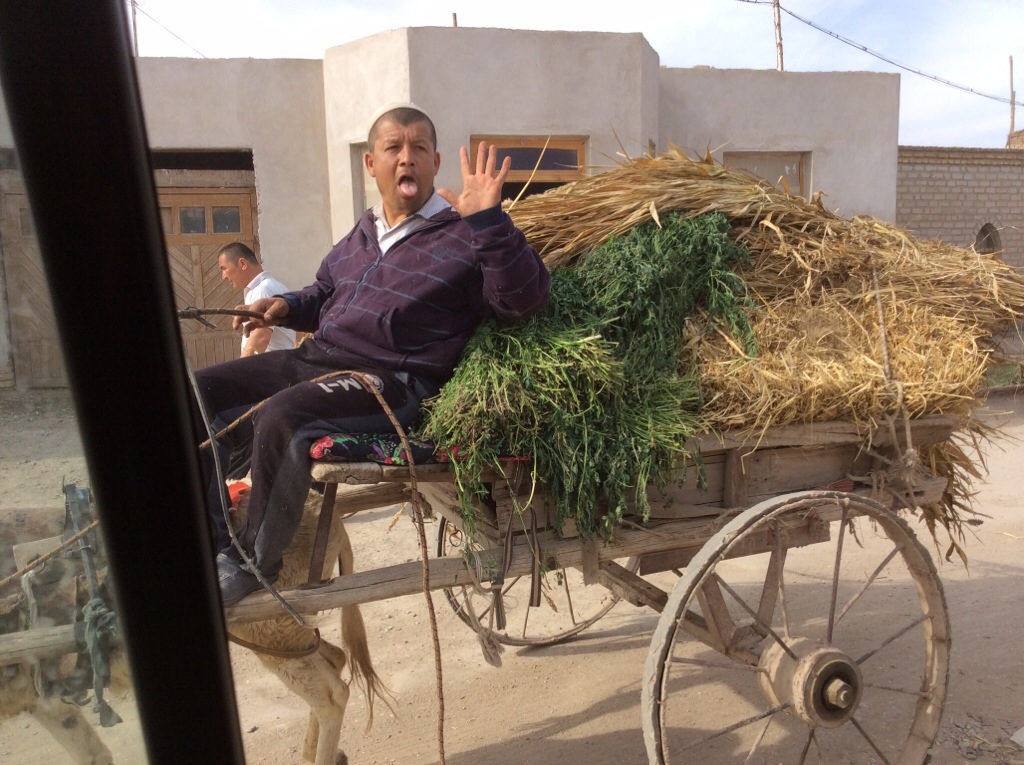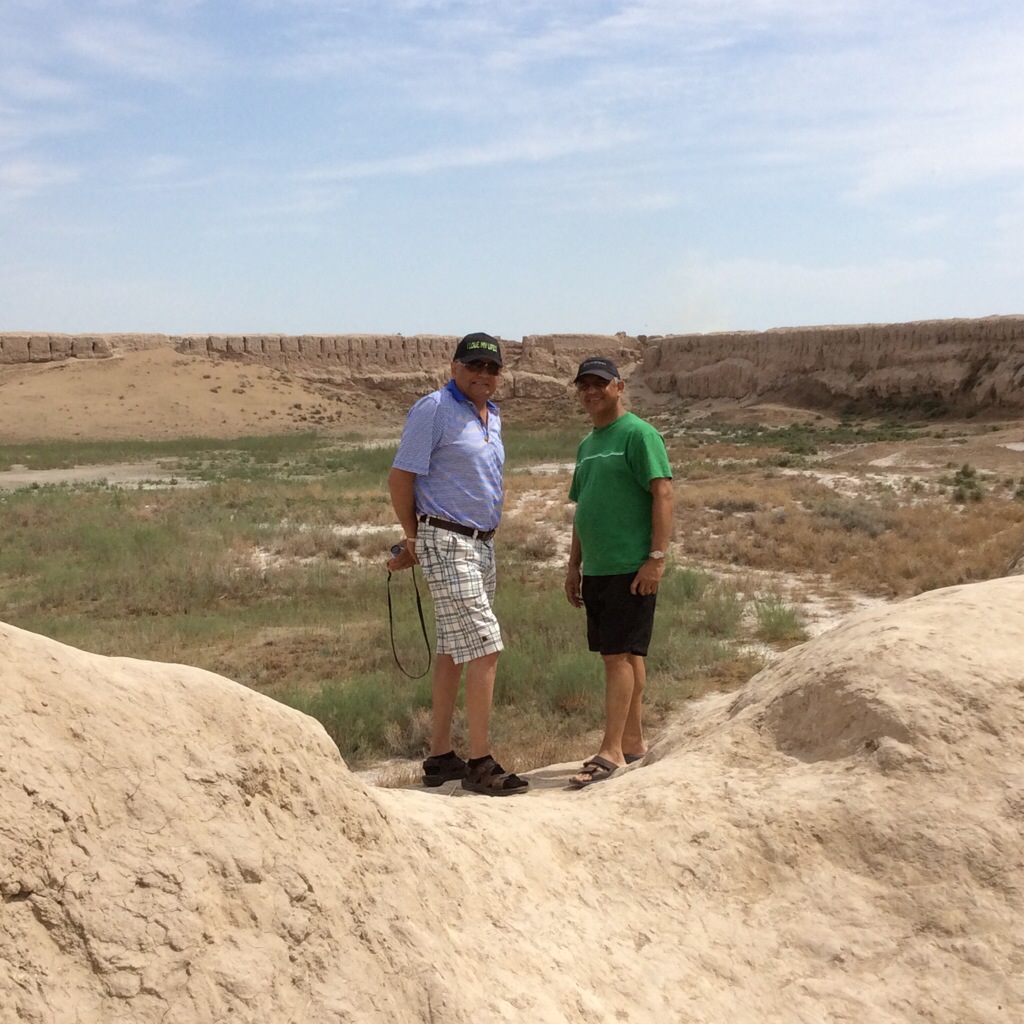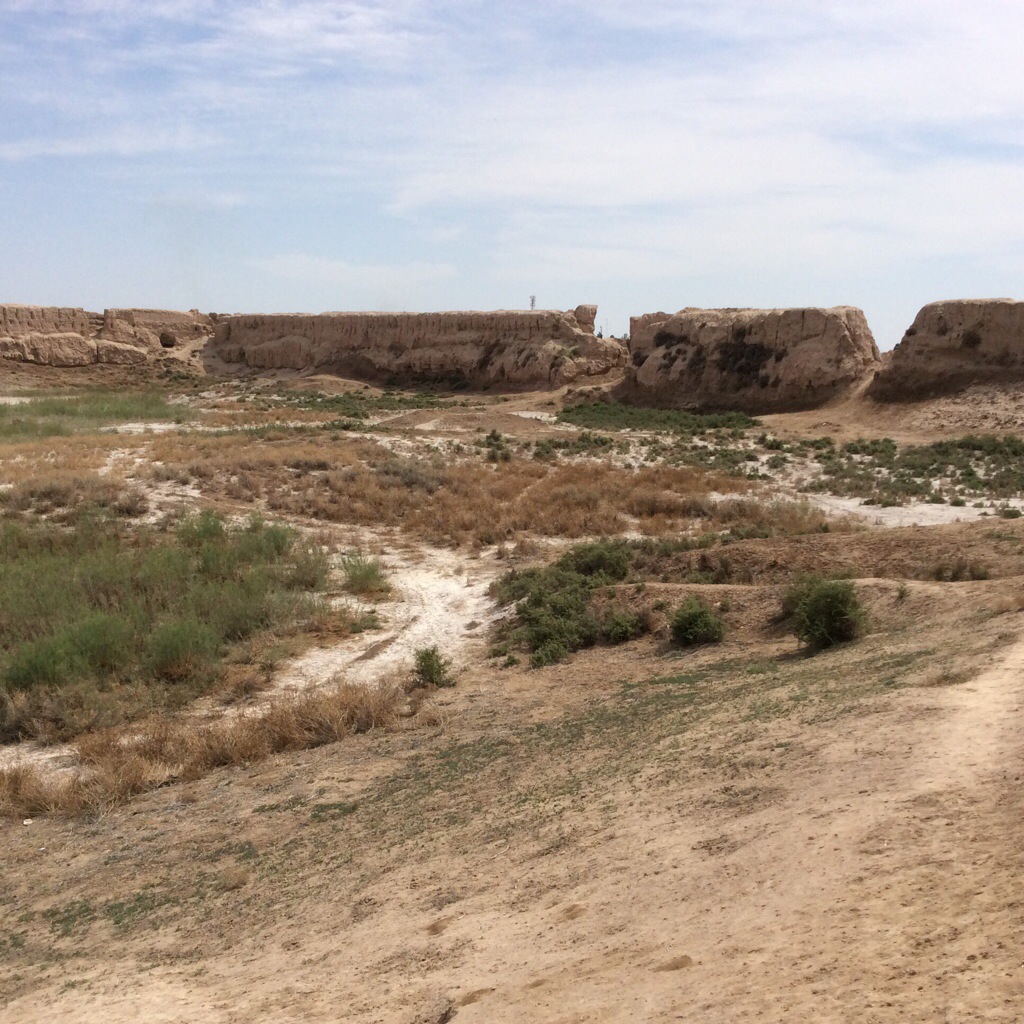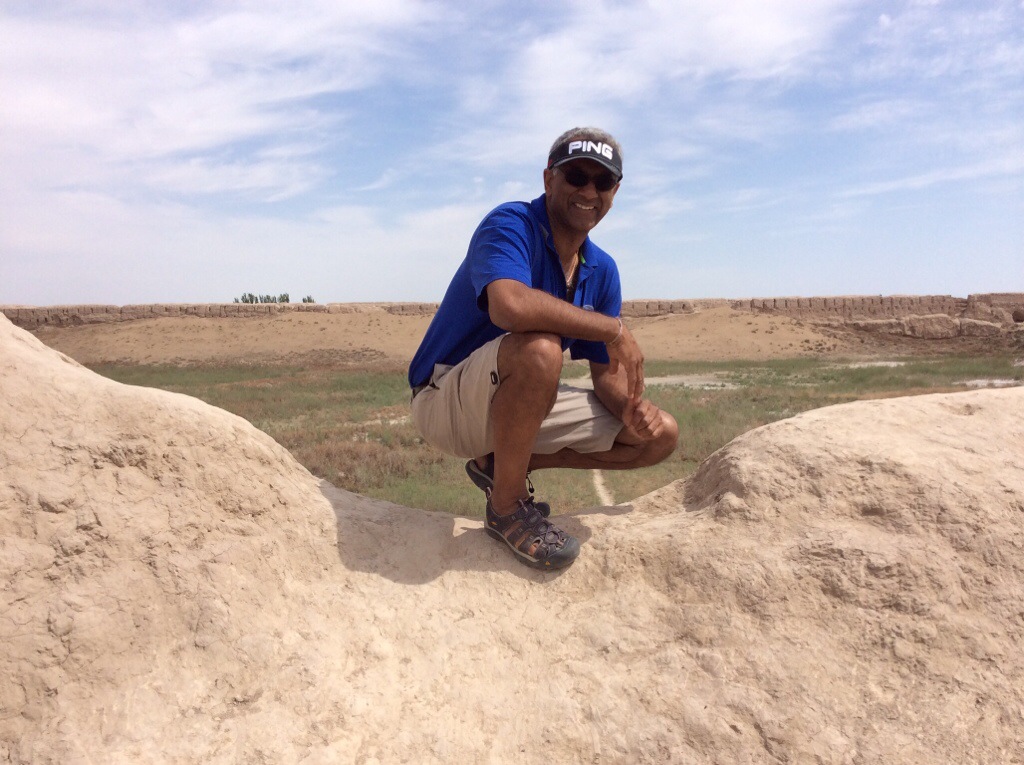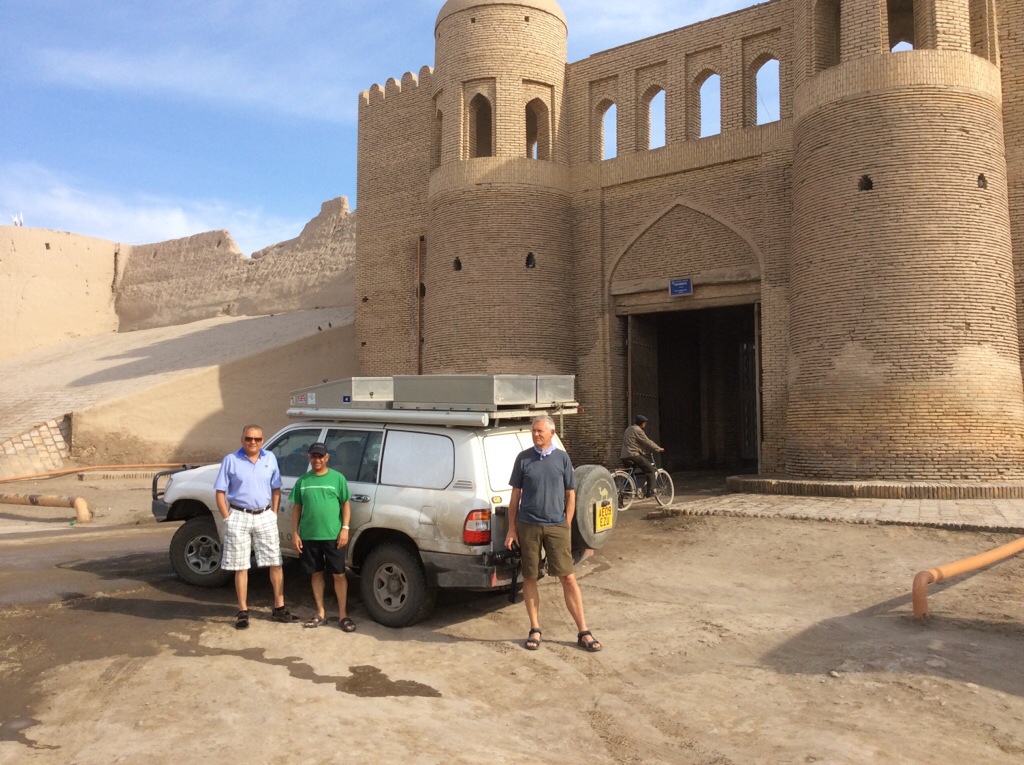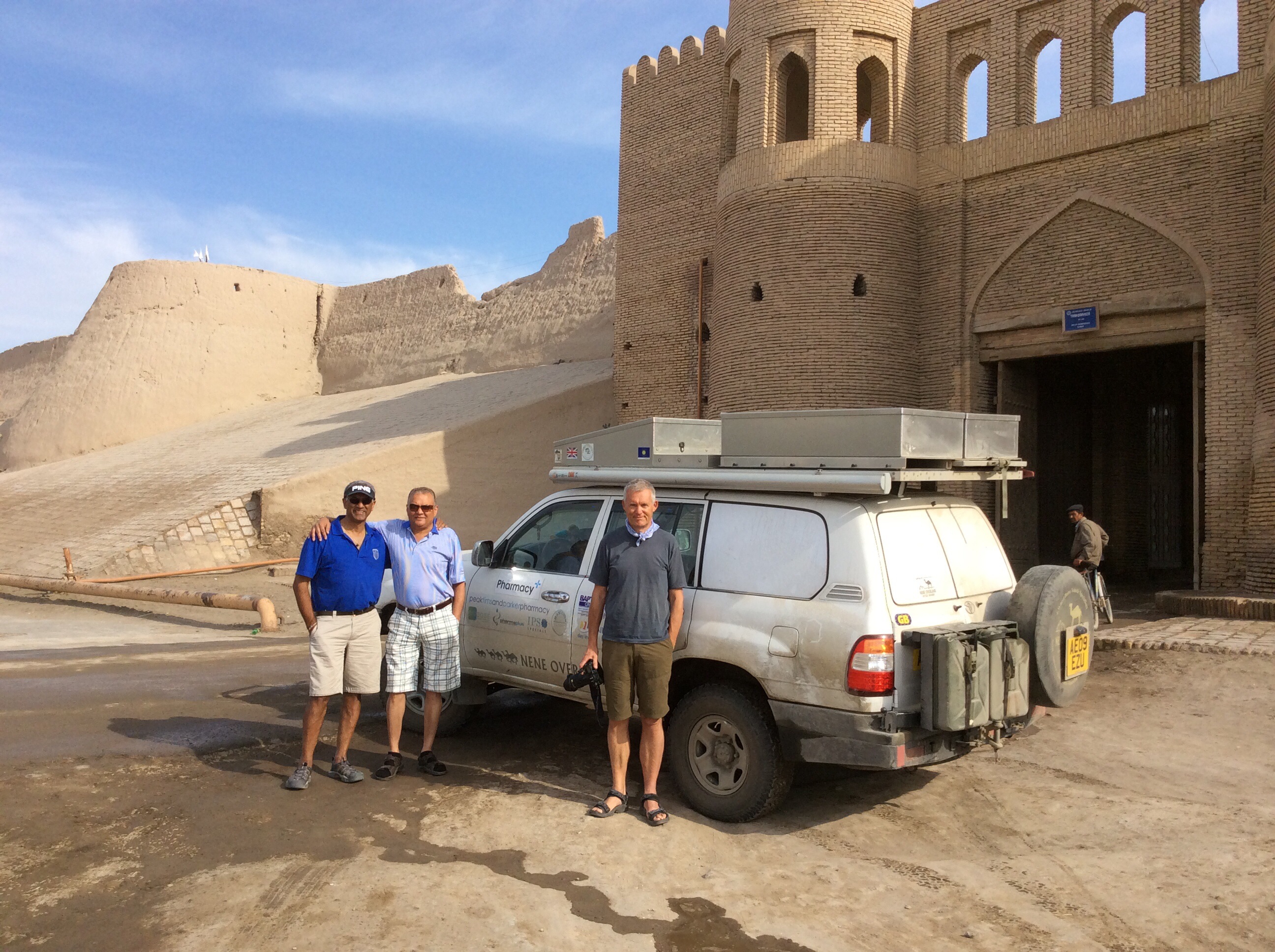Manvir – completing a foreign exchange trade ,the best rates in town can only be found in a local carpet shop!!
Monthly Archives: May 2014
The Ark – a brief history
Outside the Ark – The Square or Registan
Where the beheading of two British officers took place in 1842 – Prior to their execution ,they had to dig their own graves!!
THE ARK : A royal town within a town,is Bukhara’s oldest structure,occupied from 5th century right up until 1920,when it was bombed by the Red Army.
Outside ,in from of the fortress,is medieval Bukhara’s main square ,the REGISTAN,a favourite venue for executions,including those of the British officers Stoddart and Conolly ,both of whom were beheaded in the square in 1842
The Ark
Miri Arab Madrasah
The Kaylan Minaret
Day in Bukhara : 24th Day Monday 5th May 2014
Not a driving day today. Walked around Bukhara absorbing all the sights before it got,just too hot – 36*C ! It certainly has a long and interesting history.
Bukhara – The Holy City
The name of Bukhara,originates from the word “vihara”‘ which means “monastery” in Sanskrit. Bukhara lies west of Samarkand and was once a center of learning renowned throughout the Islamic world,particularly in the development of Sufi approach to philosophy,religion and Islam .
Bukhara is an Ancient settlement with a history that goes back to the early centuries A.D.The 4th c BC conquest by Alexander the Great
In 1220 Bukhara was conquered by Mongols of Genghis- Khan ,this brought to an end a period of great economic growth
Bukhara and Khiva were always in conflict and both developed individually because of their rivalry
The Kalyan minaret,was built in 1127,it is 9 meters in diameter at the base ,with a height of 46 meters.It has stood for 800 hundred years now without once needing repairs. Criminals were reputed to be thrown from the tower!!
On the left hand side of the square where the Kalyan minaret stands,the MIRI- ARAB MADRASAH,was built in 1535-1536.
THE ARK : A royal town within a town,is Bukhara’s oldest structure,occupied from 5th century right up until 1920,when it was bombed by the Red Army.
Outside ,in from of the fortress,is medieval Bukhara’s main square ,the REGISTAN,a favourite venue for executions,including those of the British officers Stoddart and Conolly ,both of whom were beheaded in the square in 1842
In the 16th century ,Bukhara became the capital of a large Central Asian State
From 1924 Bukhara was part of Soviet Uzbekistan.
Bukhara is approaching the age of 2500
A local scene from Bukhara
Bollywood
Next stop Bukhara :23rd day Sun 4th May 2014
Left Khiva for Bukhara in Uzbeckistan at 9.15am via visiting visiting on route first,Guldursun Qula – a big empty fort .Built in the first century(2000 years old!!!)
Arrived at 6pm having travelled about 350 miles – another full day of driving
It was a long drive fairly uneventful ,with the usual long stretches,extreme pot holes and duel carriageways which regularly criss -crossed – so had to be attentive of on coming vehicles.
Our hotel in Bukhara was located in a square called Labi-haus Cente .Its buzzing and appeared cosmopolitan looking with lot of tourists.Russians have a vast area to have their holidays in,when you consider their history with these regions ,French and other Europeans too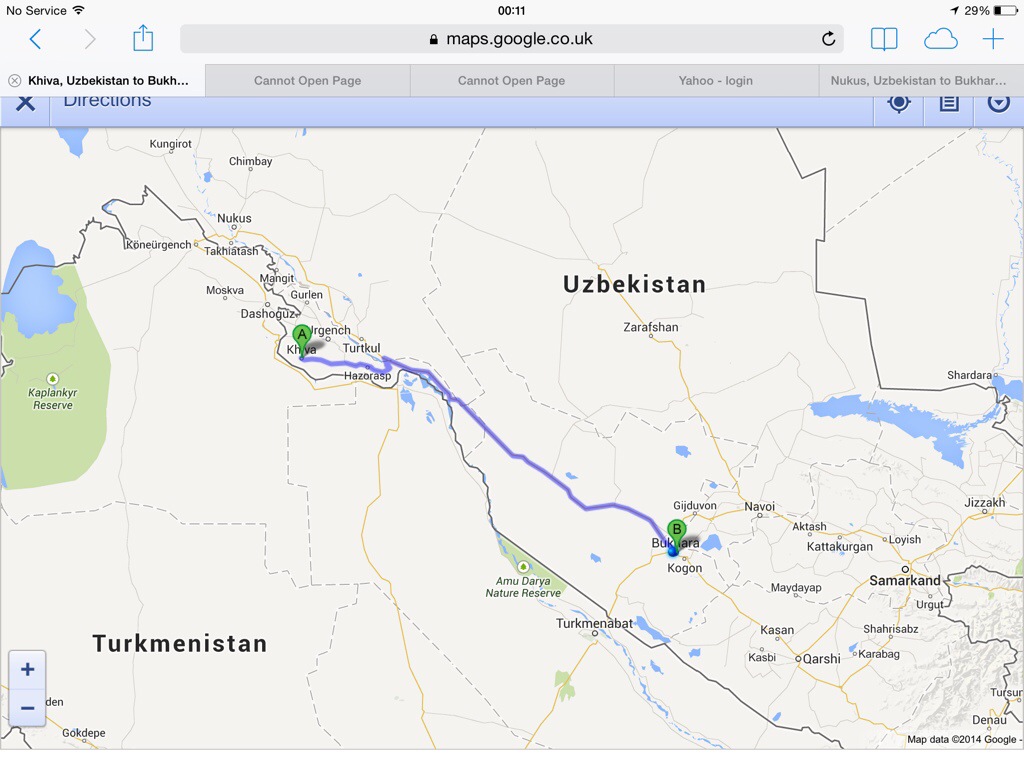
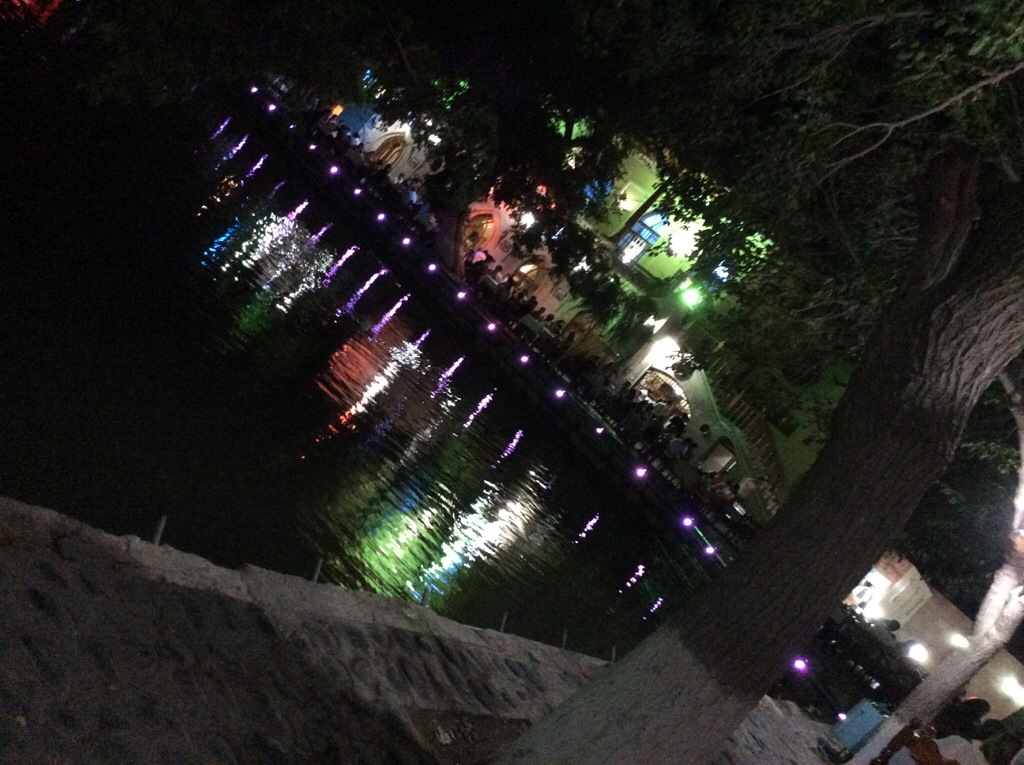
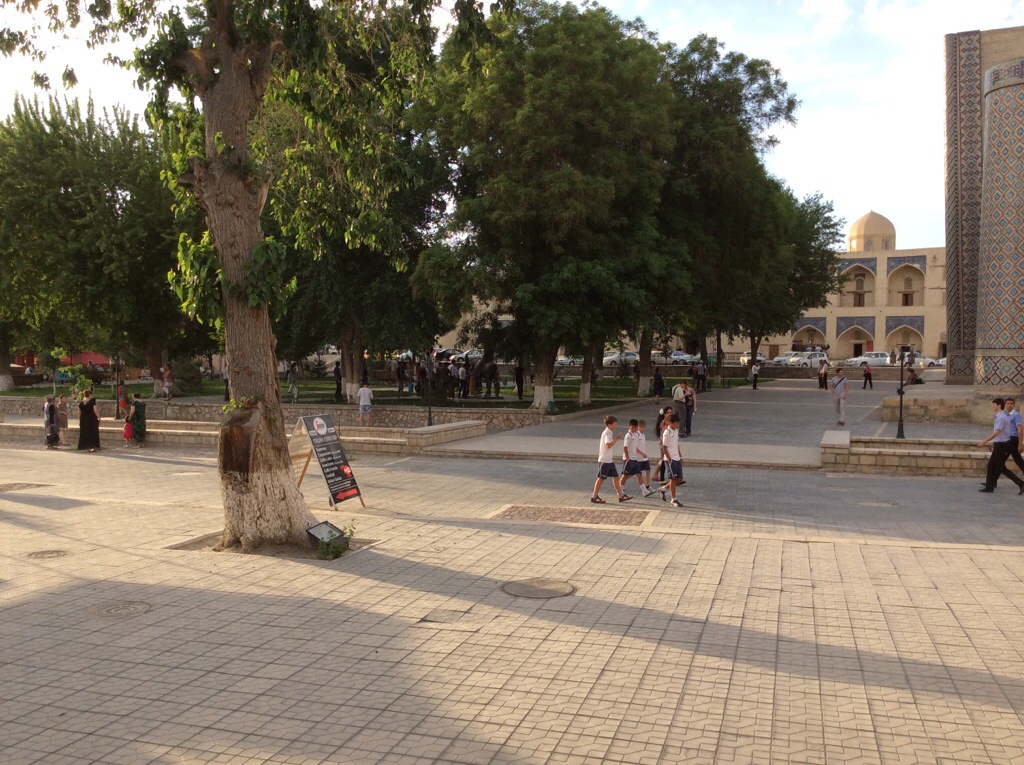
Khiva
22nd day Sat 3rd May
Left Nukus at about 11.30am for Khiva via Urgench and ancient Khorezm.Going to be a pretty light relaxing day.Started to see the terrain starting to change on this short journey today,can start to see mountains and a subtle change in the greenery.much more pleasant to the eye
Tomorrow want to reach Bukhara ( then Samarkand and Tashkent , thereafter making our way out of Uzbekistan and into Kyrgyzstan)
It was also very noticeable the change in the way ladies dressed – salver chemise type,very symmetrical features and very well dressed
KHIVA – additional information – First Ancient Town we have visited
A very interesting place
I found it to be a very sleepy town,with young population.Did not see one single dog ,stray or otherwise !
In the early part of its history, the inhabitants of the area were from Iranian stock and spoke an Eastern Iranian language called Khwarezmian. Subsequently the Iranian ruling class was replaced by Turks in the 10th century A.D, and the region gradually tuned into an area with a majority of Turkic speakers.
The city of Khiva was first recorded by Muslim travellers in the 10th century, although archaeologists assert that the city has existed since the 6th century. By the early 17th century, Khiva had become the capital of the Khanate of Khiva, ruled by a branch of the Astrakhans, a Genghisid dynasty.Khiva is an important and often overlooked historical site on what was once a small trading post on the GREAT SILK ROAD.Famous for its long and brutal history as a slave trading post
In 1873, Russian General Von Kaufman launched an attack on the city, which fell on 28 May 1873. Although the Russian Empire now controlled the Khanate, it nominally allowed Khiva to remain as a quasi-independent protectorate.
Khiva is split into two parts. The outer town, called Dichan Kala, was formerly protected by a wall with 11 gates. The inner town, or Itchan Kala, is encircled by brick walls, whose foundations are believed to have been laid in the 10th century. Present-day crenellated walls date back to the late 17th century and attain the height of 10 meters.
The LARGE BLUE TOWER in the central city square was supposed to be a minaret, but the Khan died and the succeeding Khan did not complete it.Construction was thus halted and the minaret remains unfinished to this day.
The old town retains more than 50 historic monuments and 250 old houses, mostly dating from the 18th or the 19th centuries. Djuma Mosque, for instance, was established in the 10th century and rebuilt in 1788-89, although its celebrated HYPOSTYLE HALL still retains 112 columns taken from ancient structures.
Khiva was recognised as a World Heritage Site by UNESCO in 1990